Scarboro G&CCToronto, Ontario, Canada
Architect: George Cumming (1914); A.W. Tillinghast (1924)
Yardage: Par 71, 6526 Yards
Slope/Rating: 136/72.3
My Quick Review: The only Tillinghast in Canada -- If you like great greens and rolling terrain, Scarboro is for you.
My Thoughts
Scarboro is a golf course with significant architectural pedigree (Cumming and Tillinghast). The club has hosted the Canadian Open on four occasions, and has hosted many of the 'greats,' including Nicklaus and Palmer.
Cumming's routing uses the terrain very well, repeatedly crossing Highland Creek and moving the golfer golfer up, down and across some very undulating terrain. The strong use of natural features helps to minimize the urban setting in which the course is located.
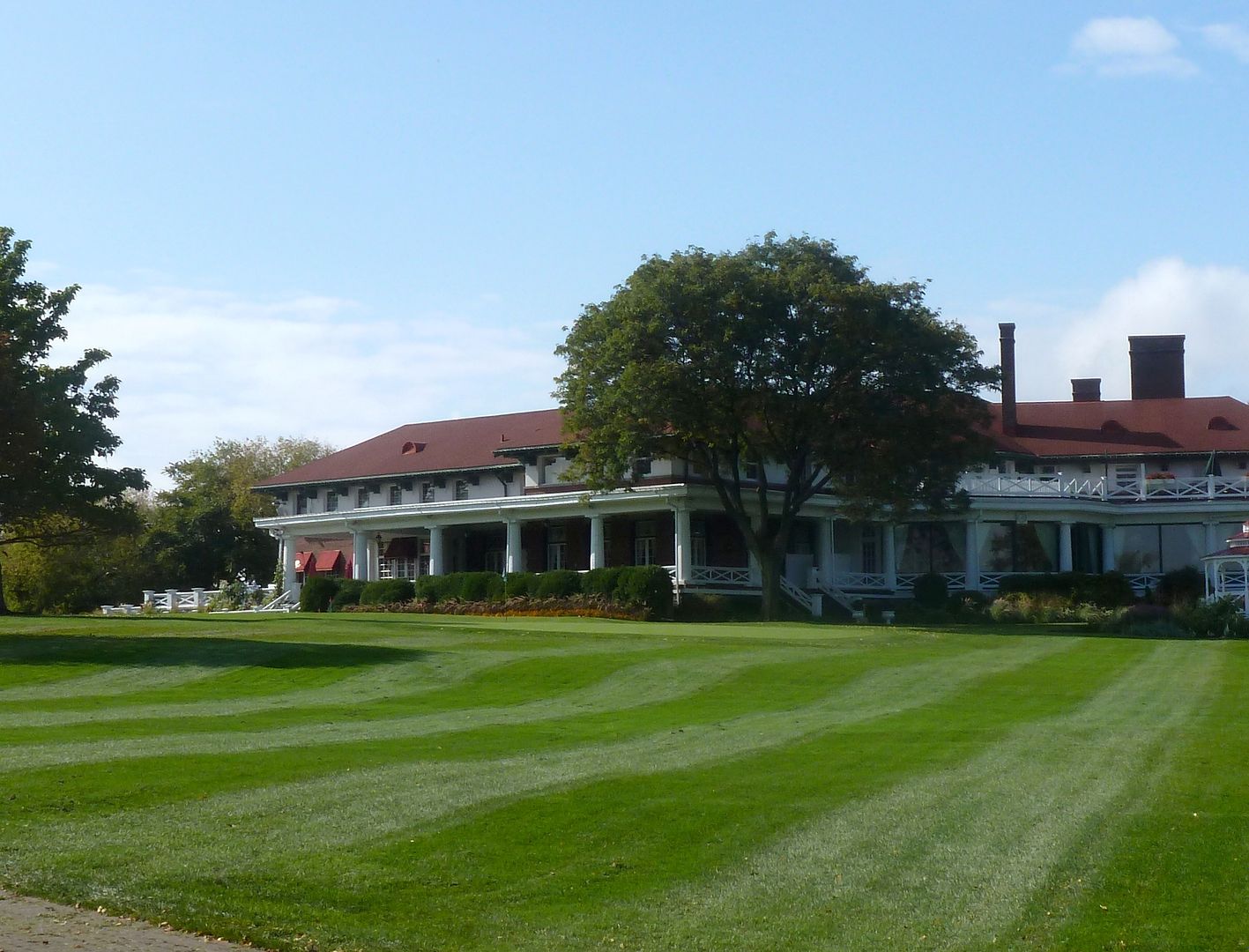 |
| Scarboro's Victorian Clubhouse |
There is some significant tilt on Scarboro's greens. I am not sure if this is typical of Tillie's greens, but the great majority of them have little internal contouring but slope significantly from back-to-front -- staying below the hole at Scarboro is an absolute must!
Of particular note at Scarboro is the sensational bunker placement. There is minimal use of fairway bunkers at Scarboro, but where they are used, they are used with purpose. Staggered bunkering creates very interesting strategic options. The greenside bunkering is very clever as well. While many of the greenside bunkers are quite deep, tremendous care was taken in varying bunker depths -- the deepest bunkers are found on the greens you are not supposed to miss.
Scarboro's greatest strength is found in its set of short par 4s. Holes 3, 7, 15 and 16 all play 340 yards or less and each requires considerable thought. These holes will all be profiled later in the review.
Holes to NoteHole 1: Par 5, 576 YardsStep on the 1st tee at Scarboro and you know you are about to play a quality golf course. Staggered fairway bunkering and plenty of corridor width guarantee that this will be a course filled with strategic options.
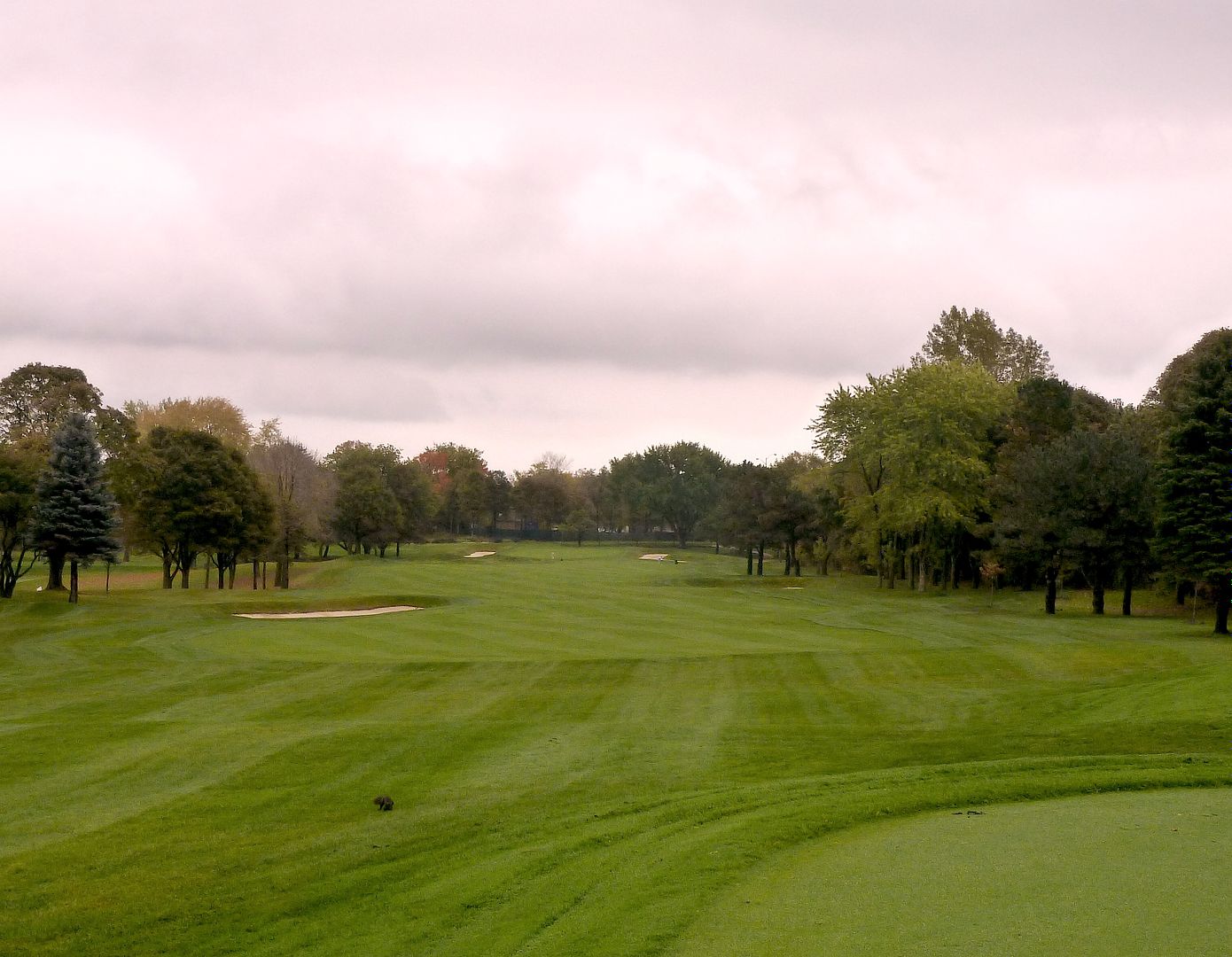 |
| 1st Tee |
The 1st is a long hole, not reachable in two for many. Know your yardages and pick your line and stay out of trouble (even laying up the fairway bunkers is an option as it's 220 to reach the first one on the left).
The second shot is all about avoiding the significant mounding on the left side of the fairway -- nothing but deep rough and nasty lies there! The fairway is plenty wide 150 yards from the green, but narrows as you get closer to the green -- how comfortable do you feel on the 1st hole of the day?
 |
| Mounding Guards the Left Side of the Fairway |
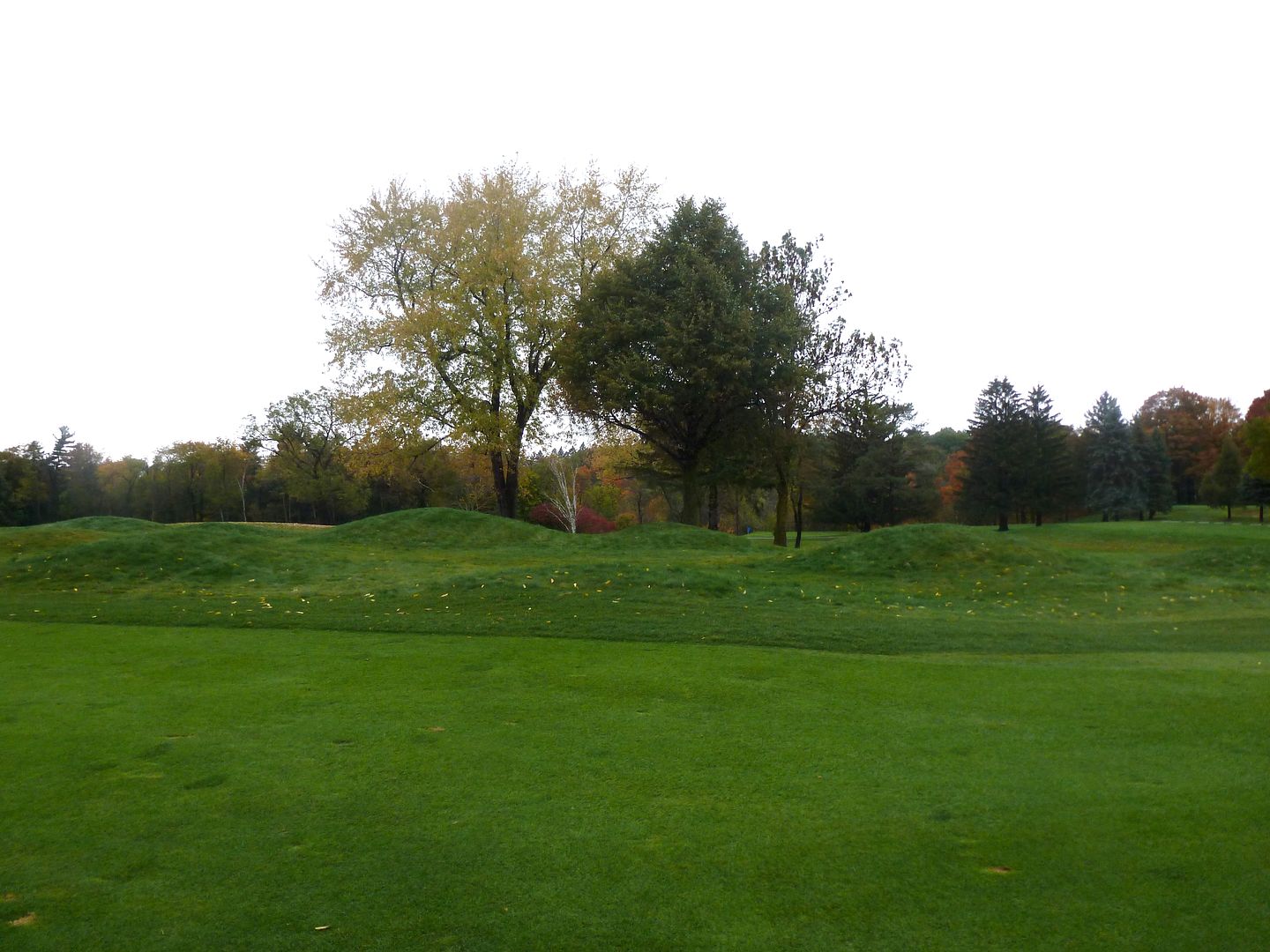 |
| Another Look at the Mounding |
Setting the tone for the remainder of the golf course, the first green slopes significantly from back-to-front and is guarded by deep greenside bunkers. Not the most interesting greensite on the golf course, but it serves it's purpose as it is open in front and fairly forgiving -- appropriate for the first hole of the day as the green on a monstrous (at least when it was designed) par-5.
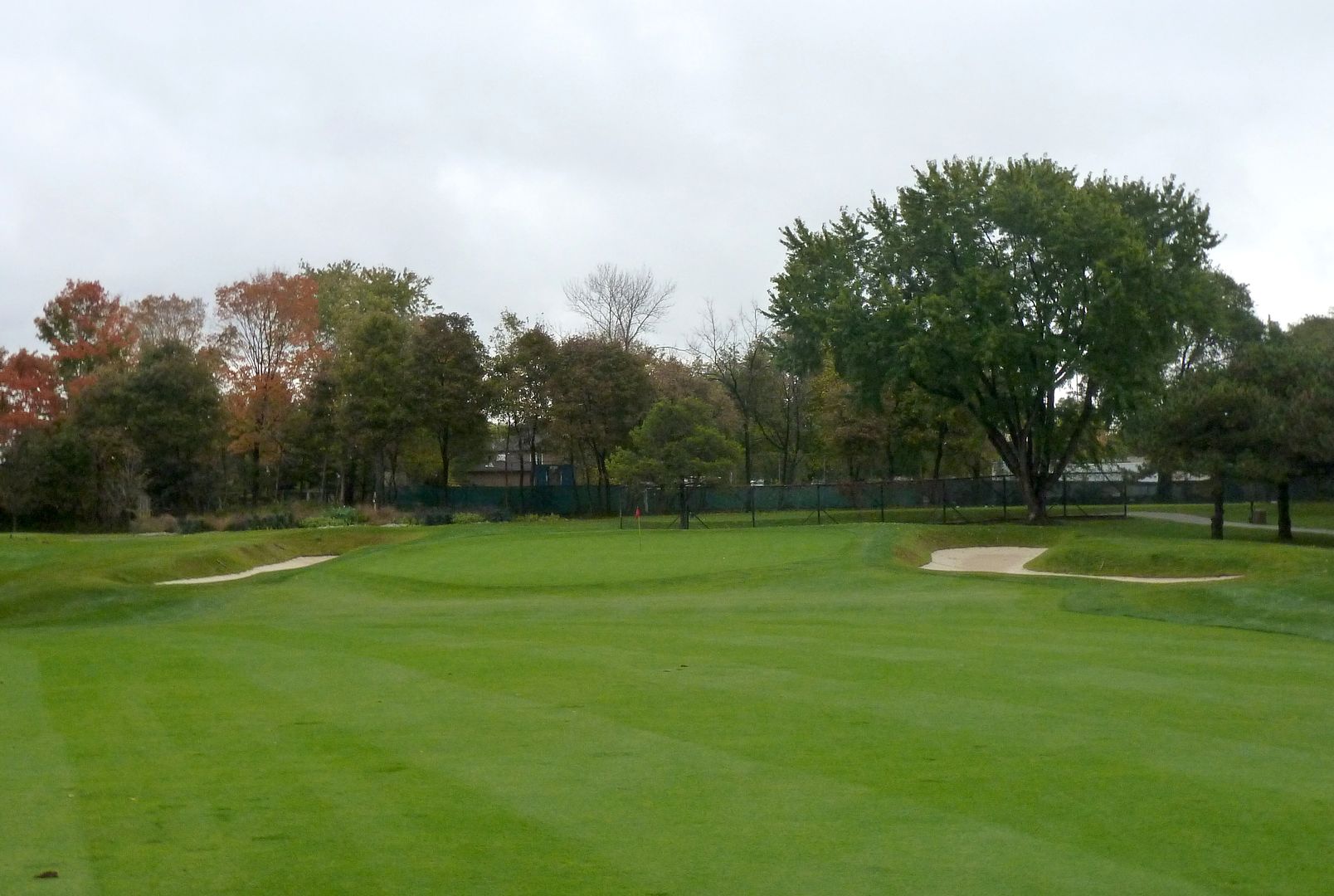 |
| Approach to 1 |
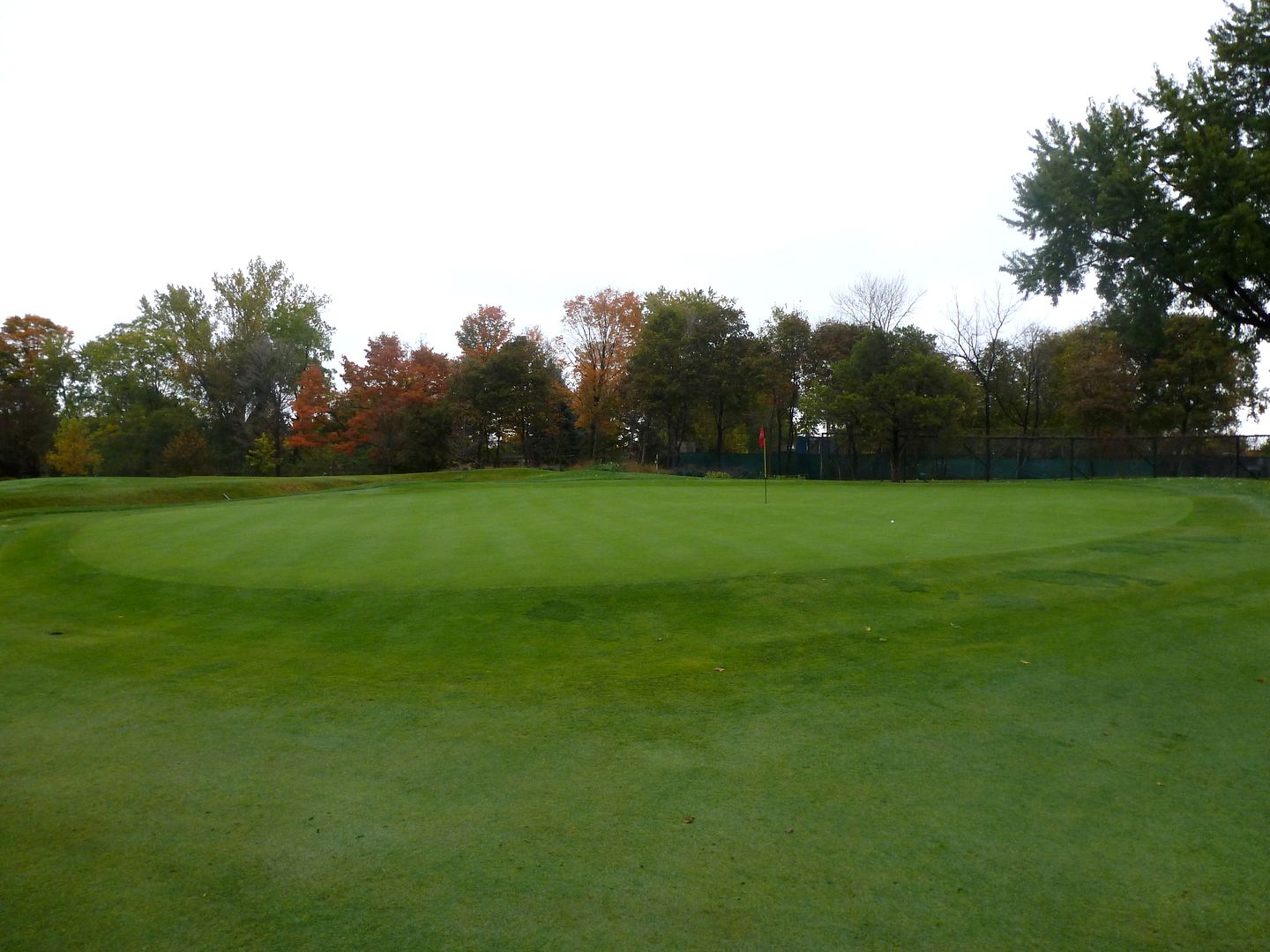 |
| Lots of Tilt on the 1st Green |
Hole 3: Par 4, 342 YardsThe first of a very strong set of short par-4s. The fairway is very wide if you are willing to lay back 125 yards from the green, but as the golfer gets more greedy, the fairway gets narrower. The right side of the fairway is guarded by a steep drop-off into Highland Creek.
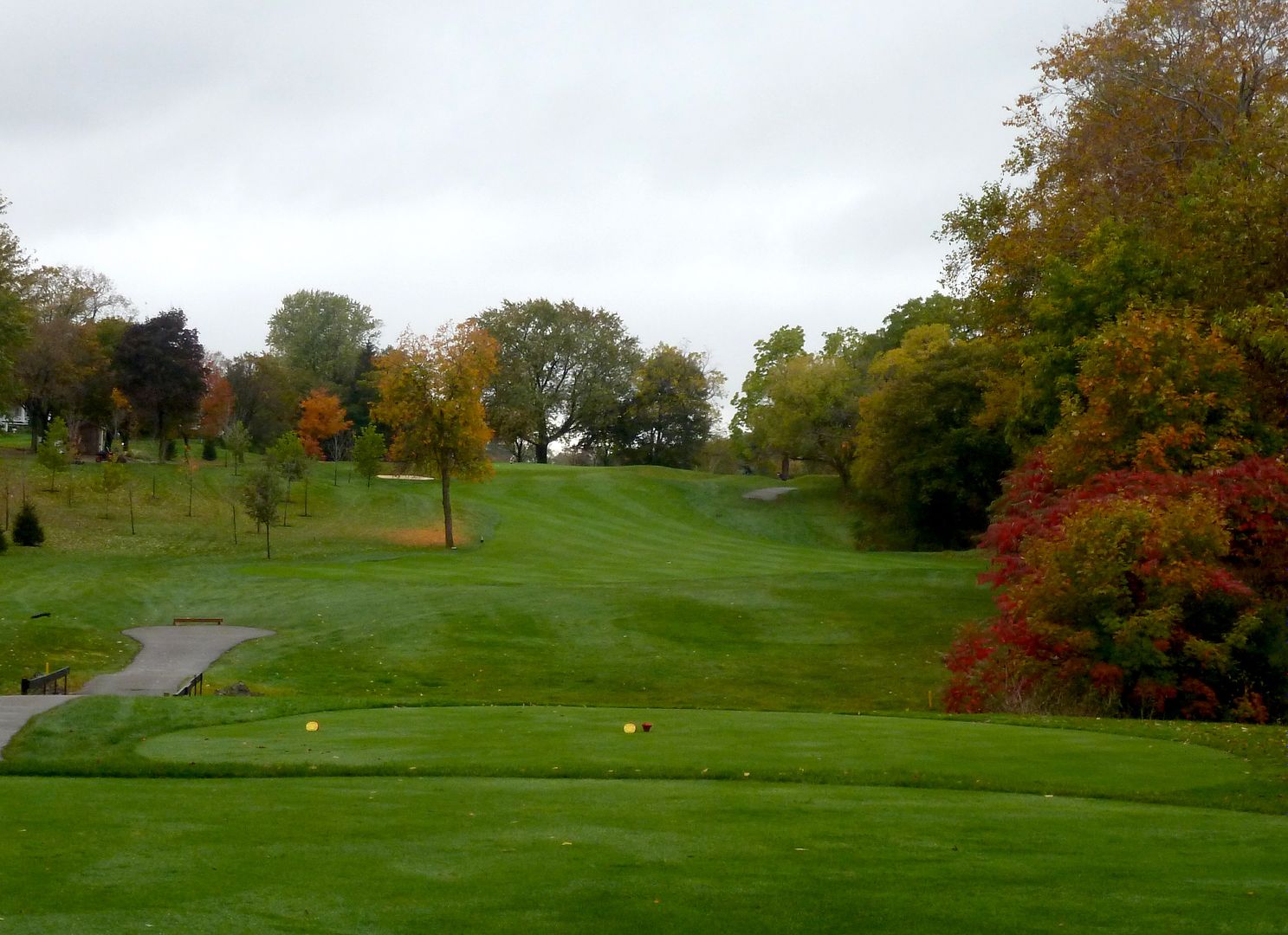 |
| 3 Tee |
Though it is drastically uphill, the approach to the 3rd seems fairly straightforward, but...
 |
| 3 Approach |
There is a significant false-front and extremely deep (and hidden) greenside bunkering left, right and long. The approach is straightforward, just don't mess it up!
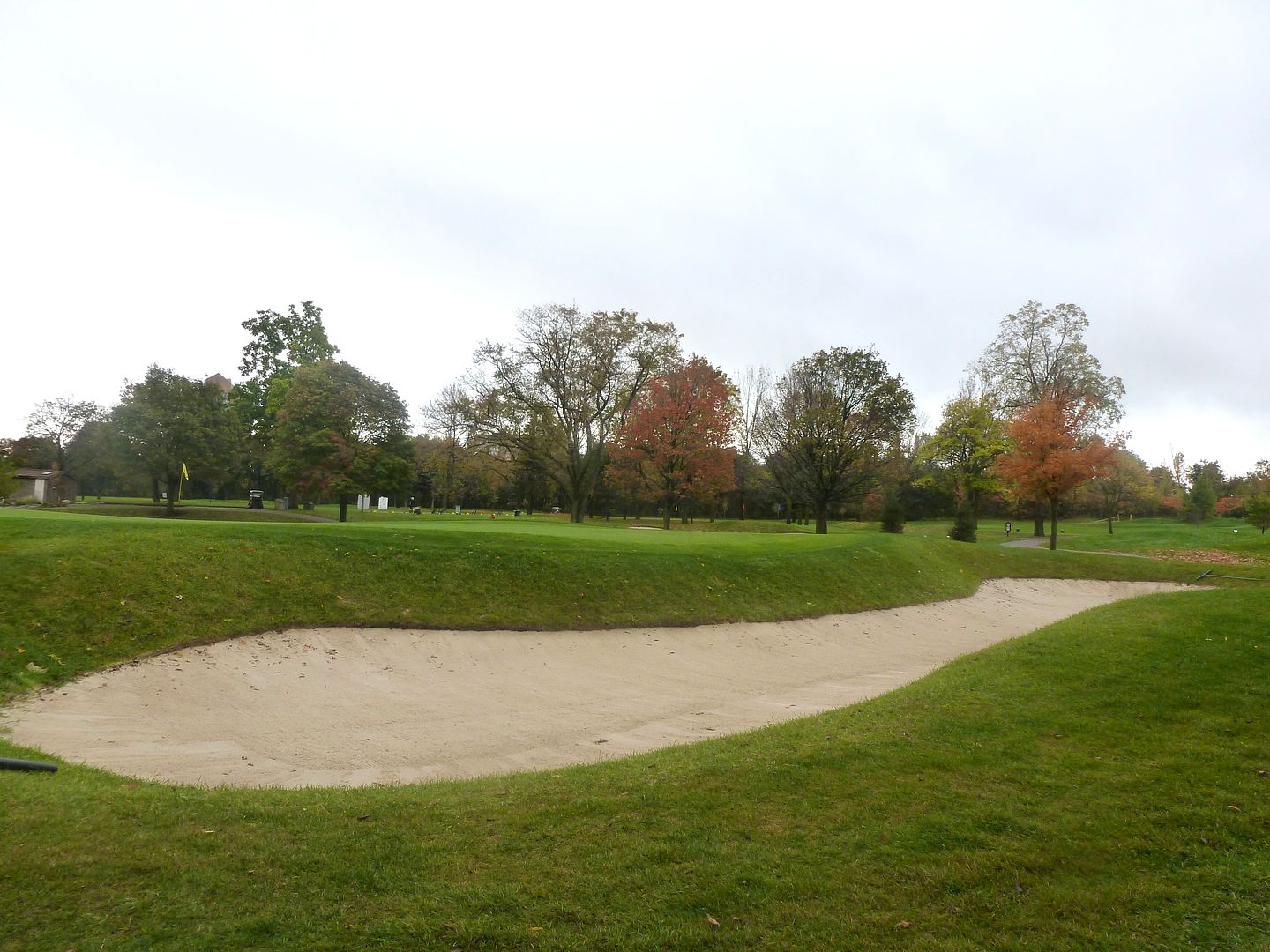 |
| Deep Greenside Bunkering |
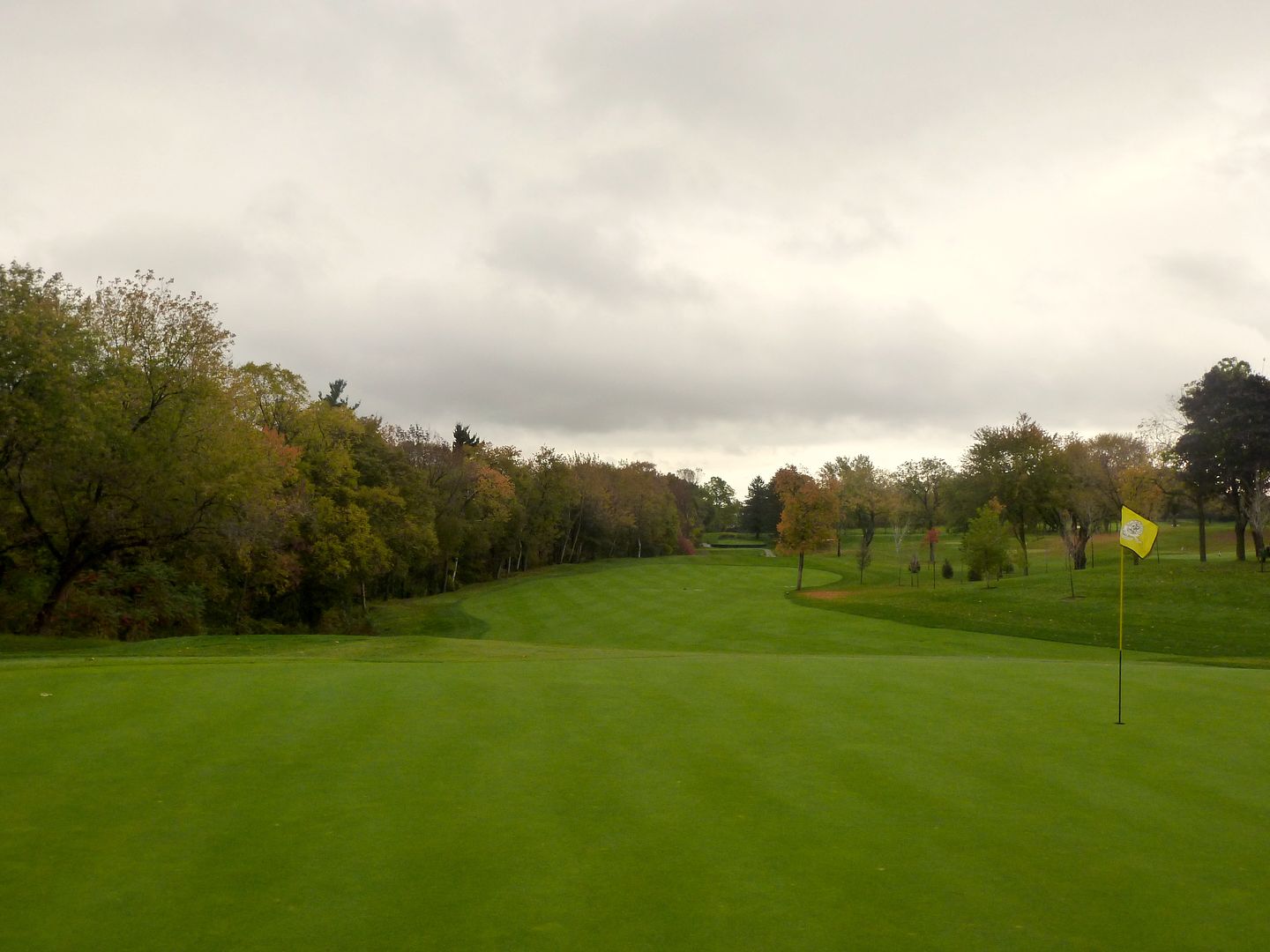 |
| 3 Looking Back to the Tee |
Hole 4: Par 3, 205 YardsThe 4th is Scarboro's 'signature' hole. A long par-3 that plays some 50 feet downhill from tee to green. The green is guarded by a series of 3 bunkers on the right and shots that are missed significantly to the right will find Highland Creek.
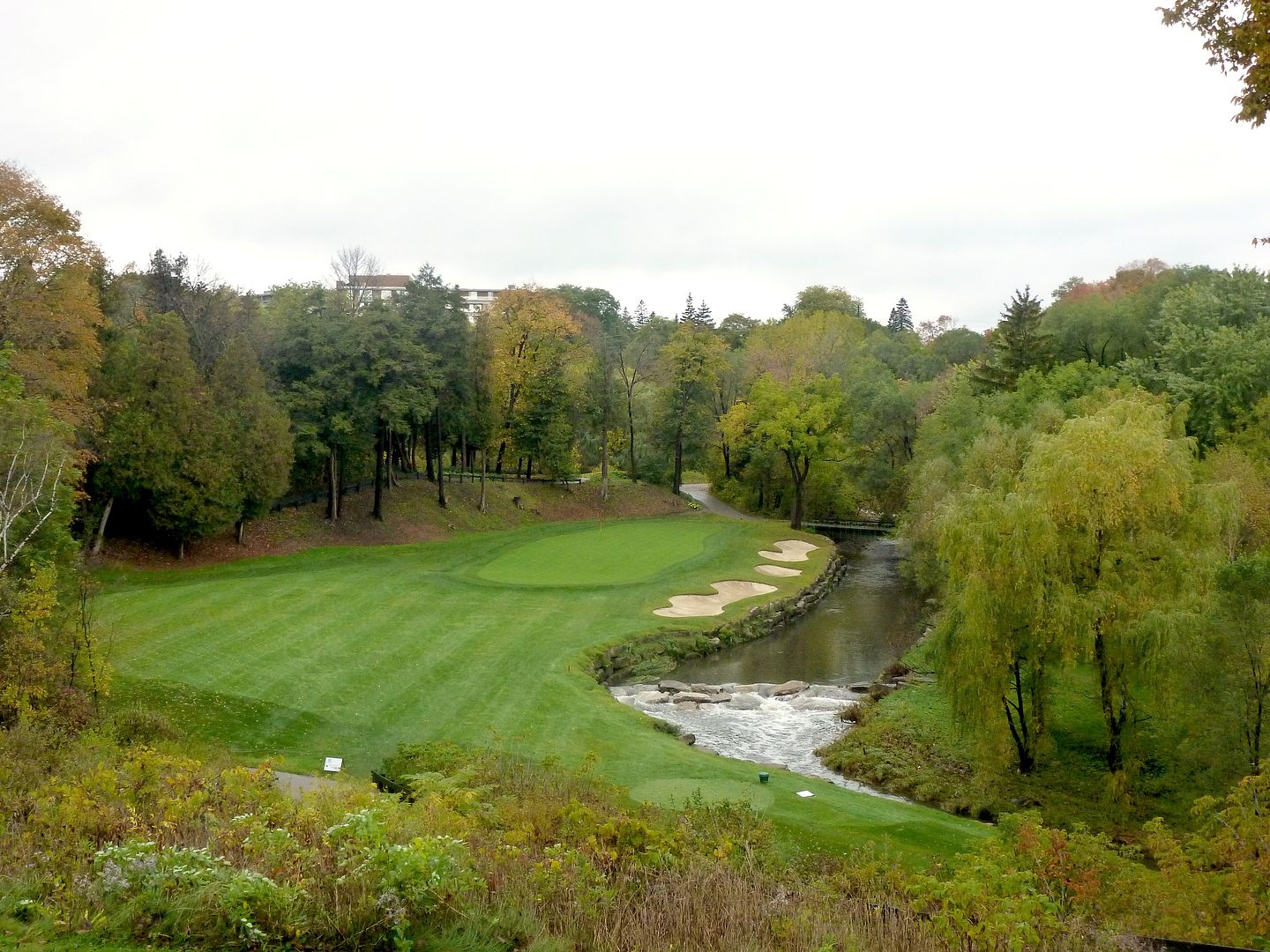 |
| 4 Tee |
The green lays at angle to the tee and appears flat from afar, but as the golfer approaches the green, it is clear that there is a large ridge running across the green 2/3 of the way back.
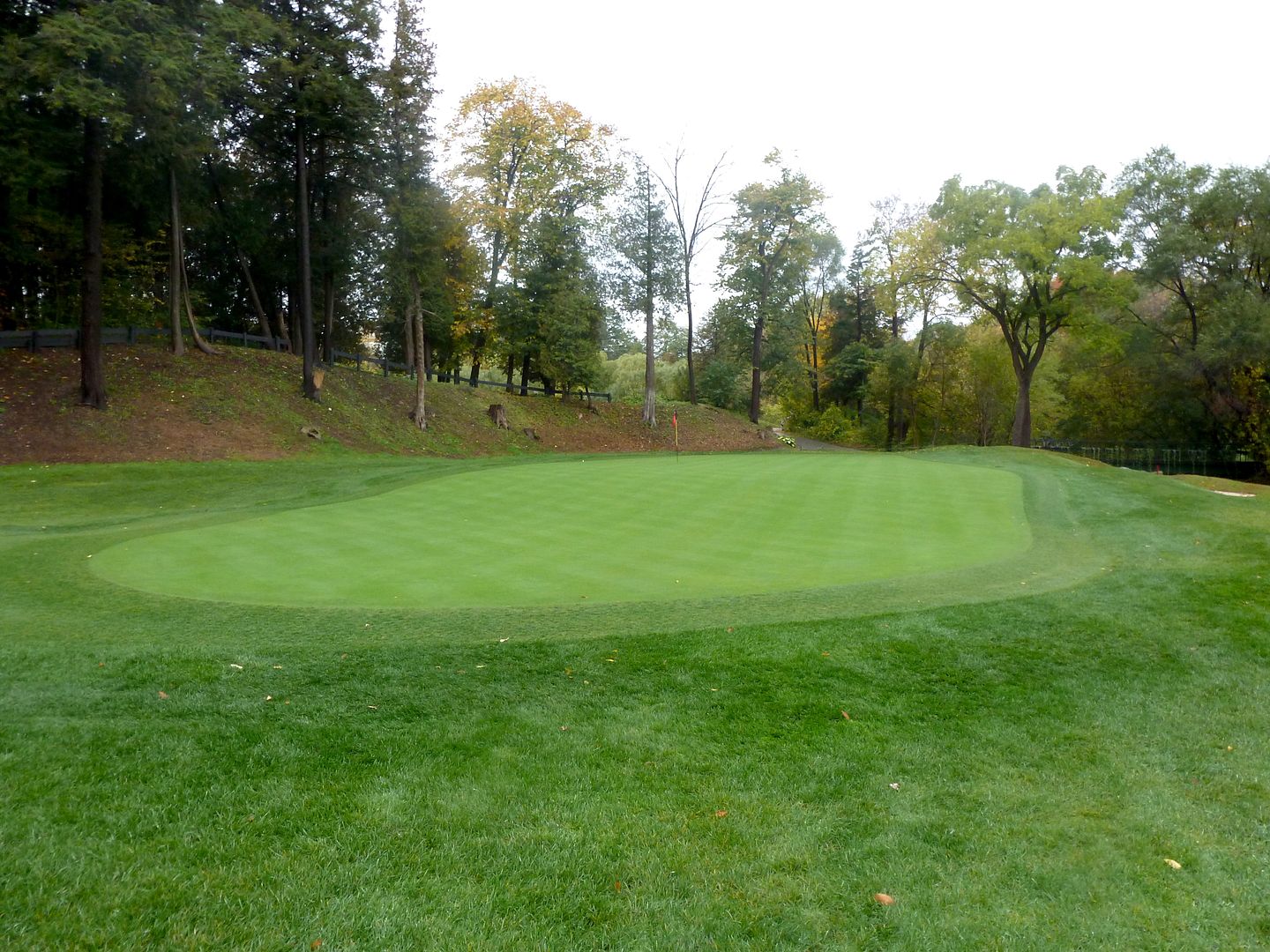 |
| 4 Green |
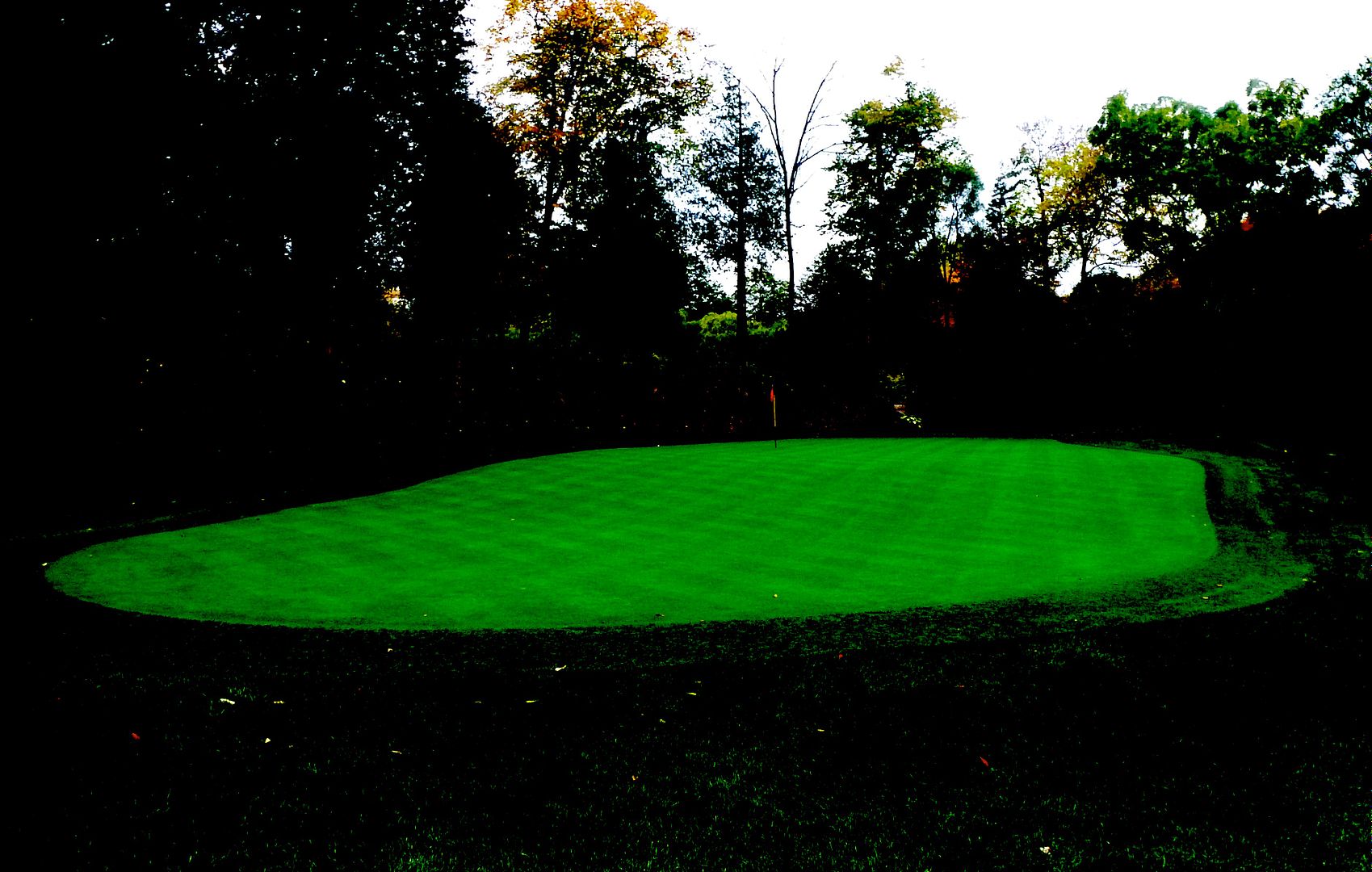 |
| 4 Green with Contouring Highlighted |
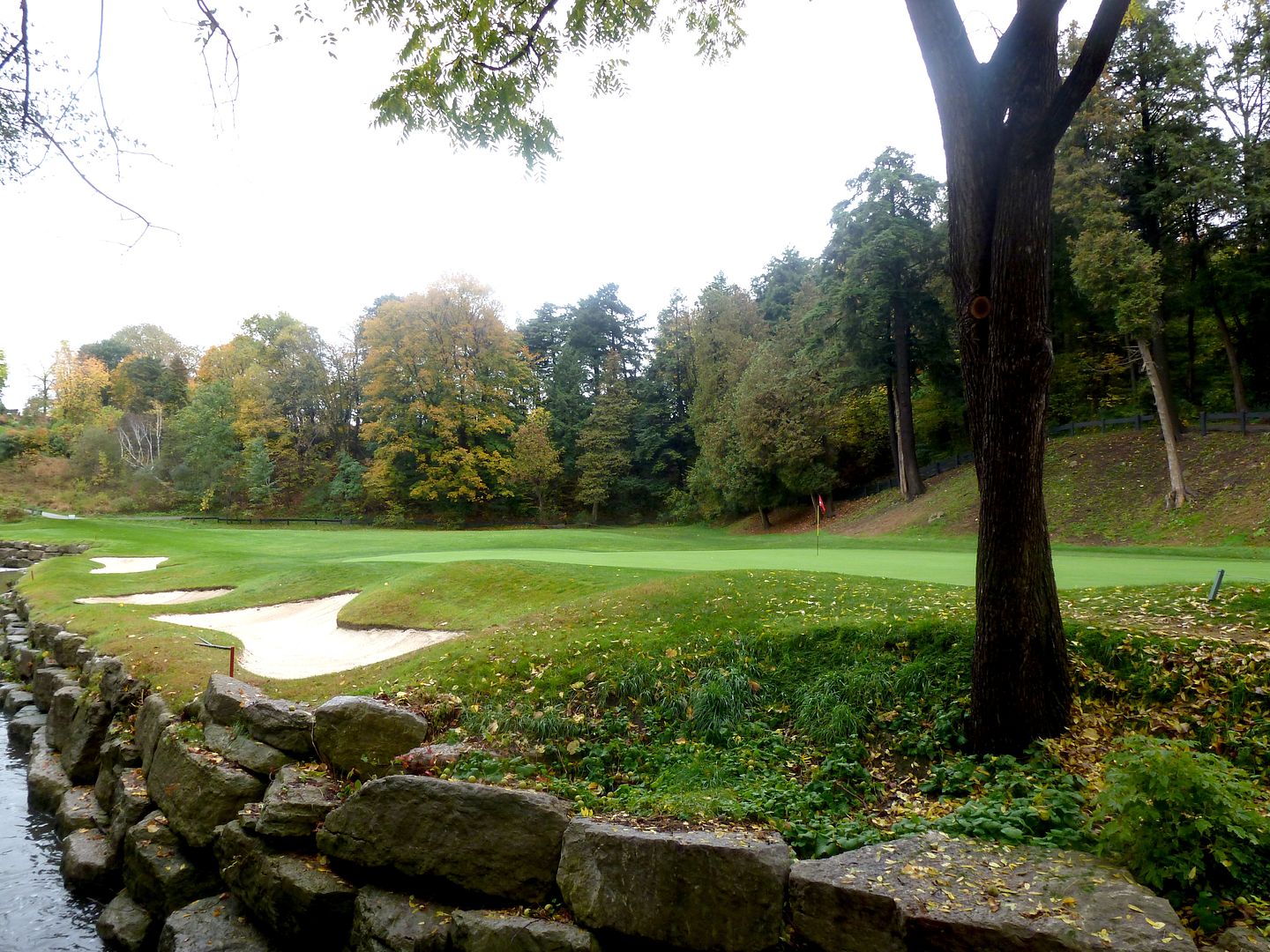 |
| 4 from Behind |
Hole 7: Par 4, 276 YardsAnother great short par-4, the 7th is short enough that many players will feel compelled to try to drive the green. But, lurking 40 yards short of the green, right in the landing area of many drives, are two deep bunkers. Just 'knocking it down there' doesn't work here -- if you are laying-up, be sure to lay-up well short of the green -- if you are going for it, be sure you can carry the cross-bunkers as finding them is the easiest way to turn a hole that should be a birdie hole into a surefire bogey.
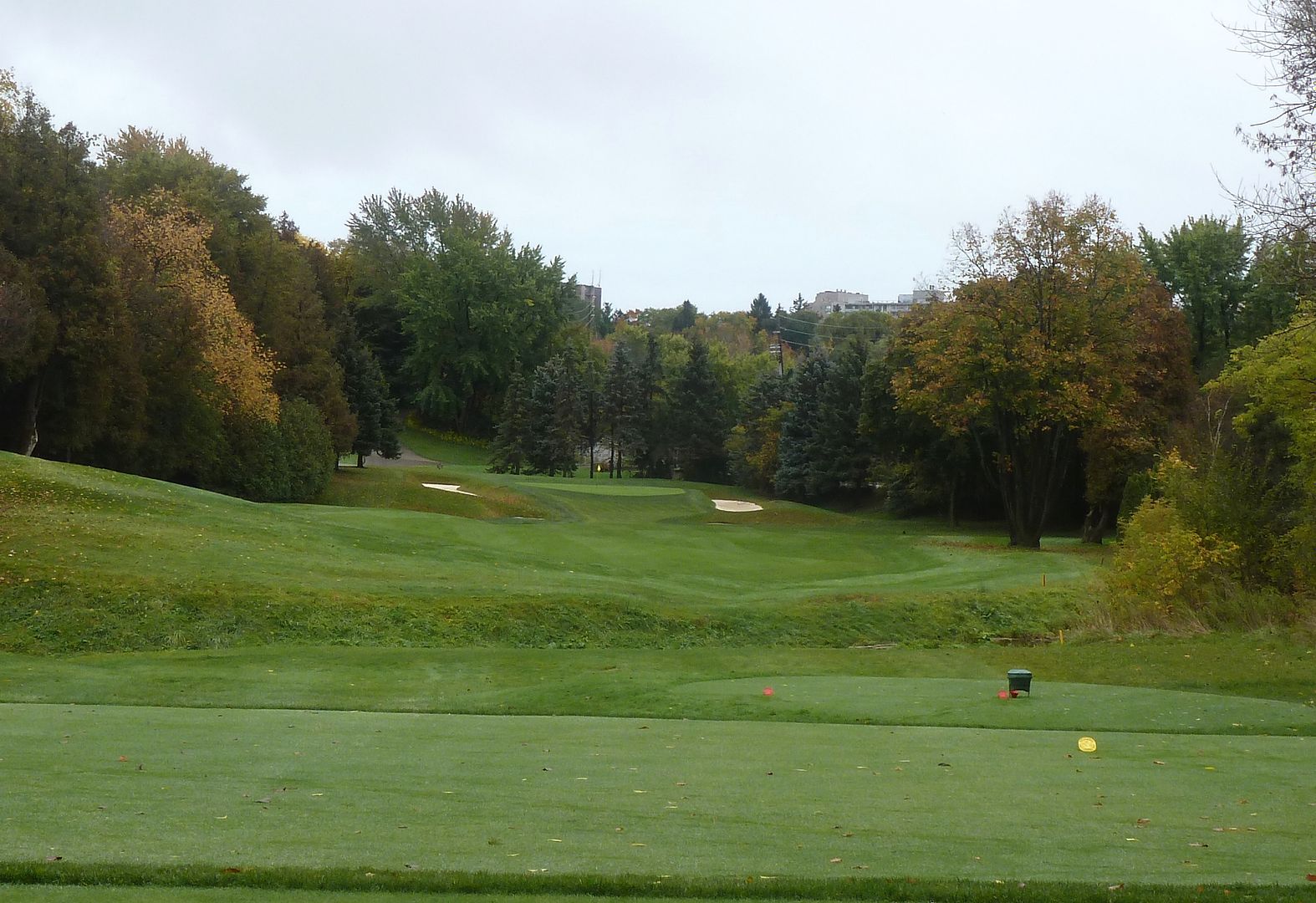 |
| 7 Tee |
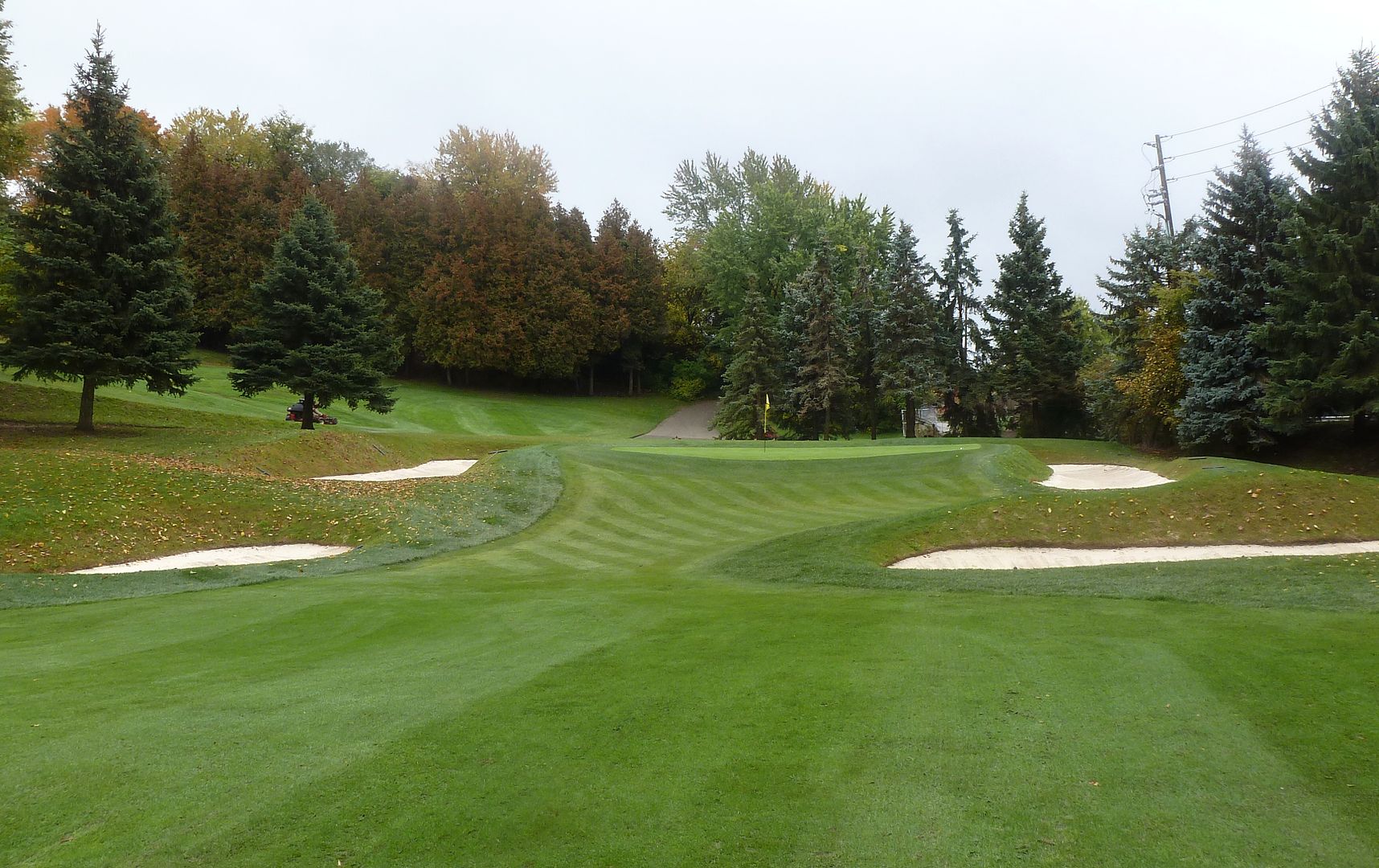 |
| 7 Approach - Note the two bunkers 30 yards short of the green |
Though it is difficult to see from the photo, there is a false-front on the green and a significant ridge that runs through the middle of this tiny two-tier green. Front pin positions are difficult to get close to.
 |
| 7 Green from Behind |
Hole 8: Par 4, 413 YardsThis hole has something for everyone -- a blind, quirky tee shot, great rolling terrain, a split-fairway, a forced-carrie over Highland Creek and an amazing natural greensite.
The tee shot is completely blind and (I presume) had a much more natural feeling before the apartment building was built. The direction of the fairway gives the golfer the idea that the hole will continue to move left, but tee shots too far left will find Highland Creek. The ideal line is straight at the apartment building.
 |
| 8 Tee |
As the player crests the hill, he is confronted with a dramatic split fairway. Finding the upper fairway is probably ideal, but very difficult in practice as it requires a perfectly placed tee shot over the hill on the right -- most tee shots will find the less desirable lower fairway.
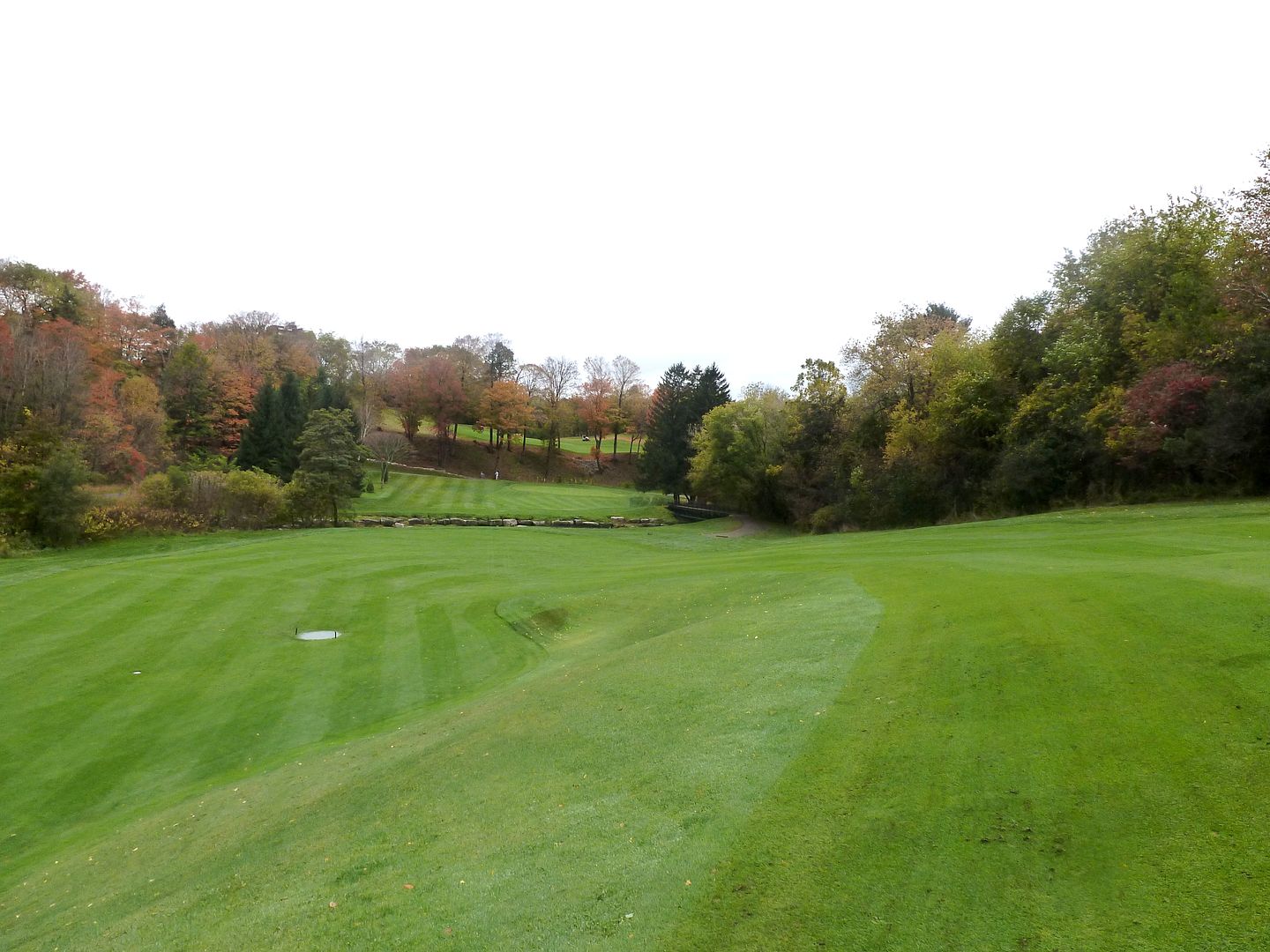 |
| 8 Top of Hill |
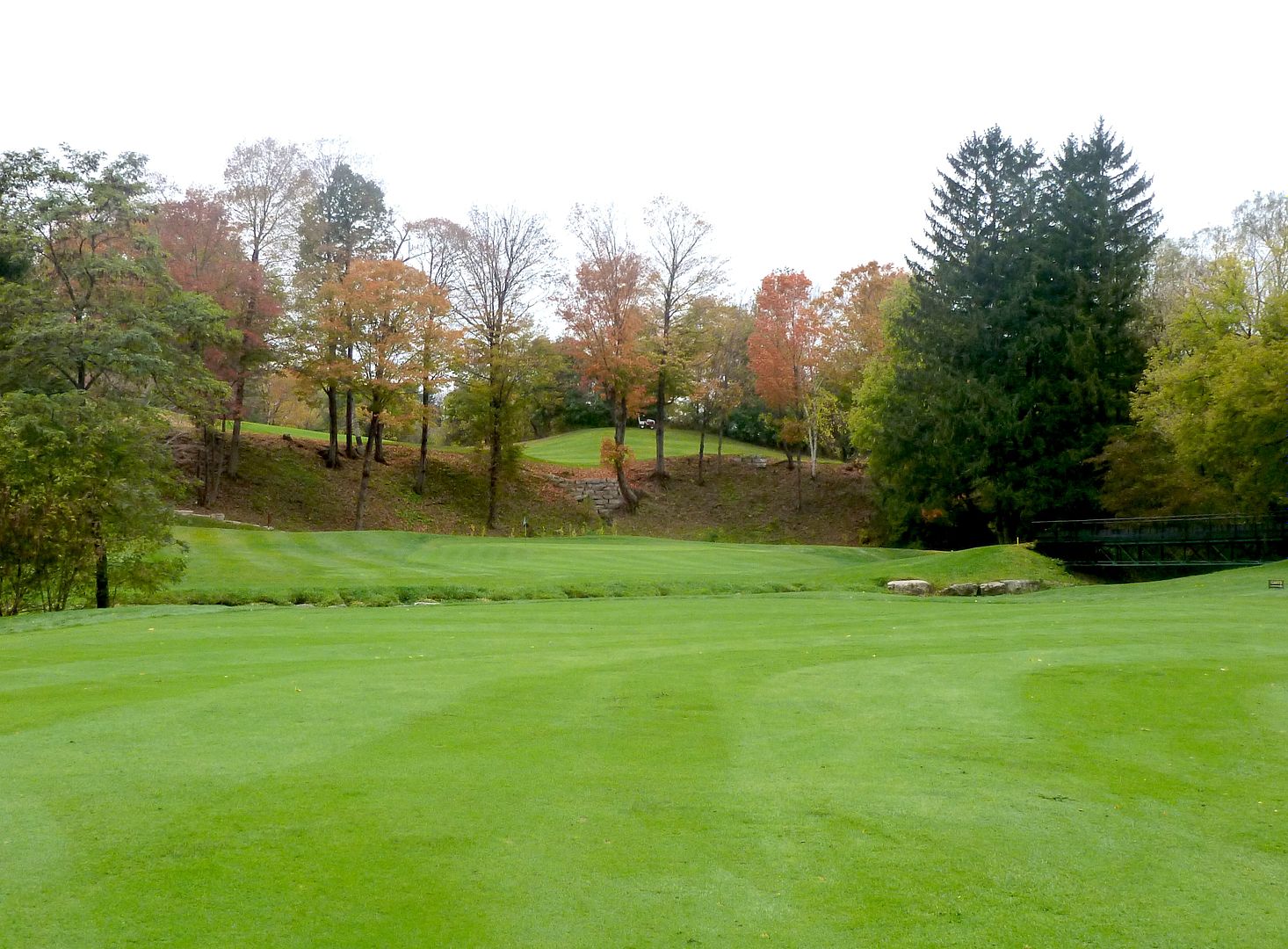 |
| The Approach to 8 is Played over Highland Creek |
The greensite on the 8th is the best on the course. Naturally located at the bottom of a mini-amphitheatre the at-grade green is perfectly placed. There's no artificial mounding or bunkering necessary -- if only all greens were like this...
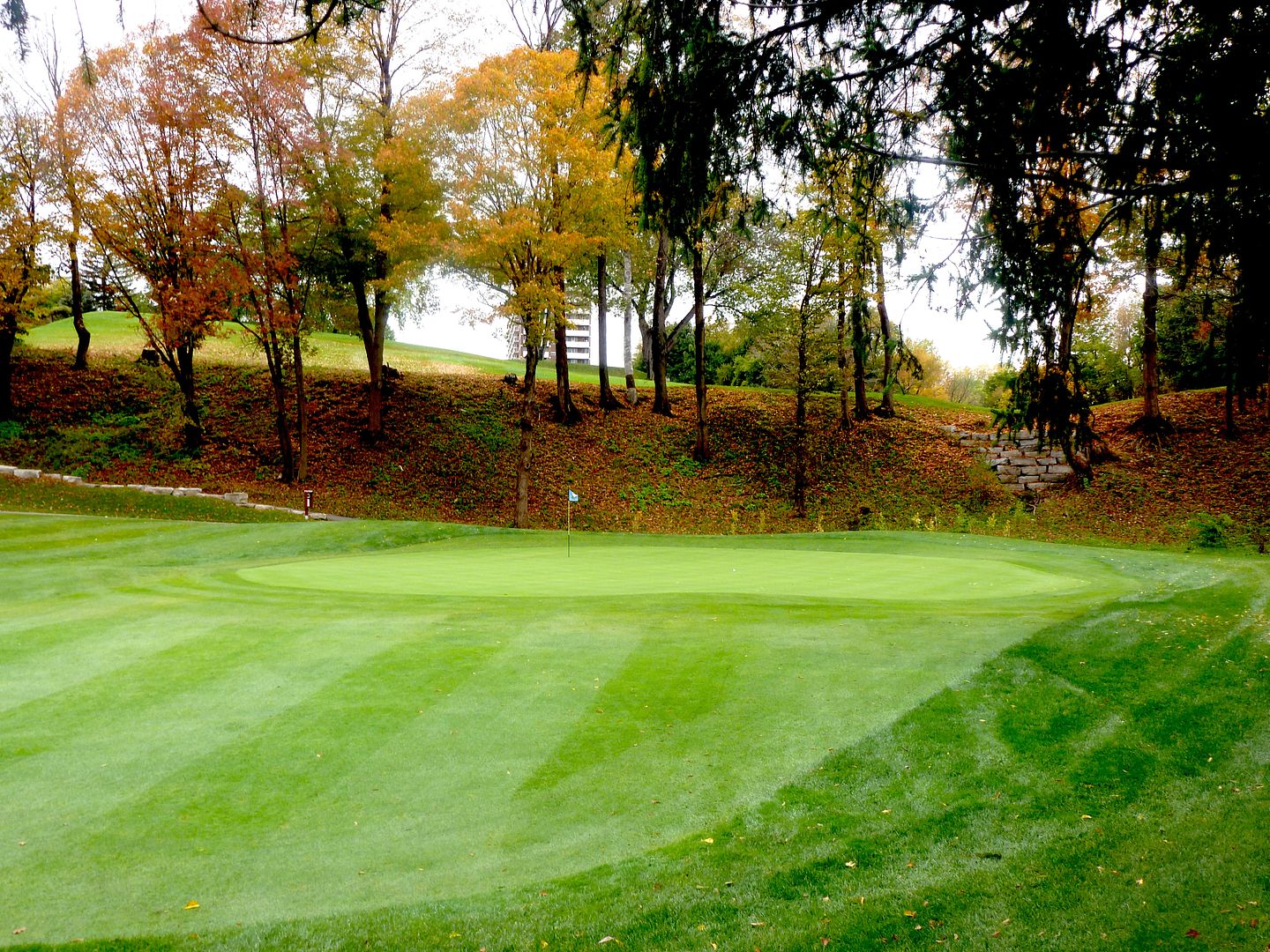 |
| 8th Greensite is as good as it gets |
 |
| 8 from Behind |
Hole 10: Par 5, 527 YardsThe tenth is easily the best par-5 on the golf course. Routed over not-so-gently rolling terrain, the tenth moves right from tee-to-green. Three bunkers staggered on the right side of the fairway protect the ideal line and ensure that players of all length and ability will have a decision to make.
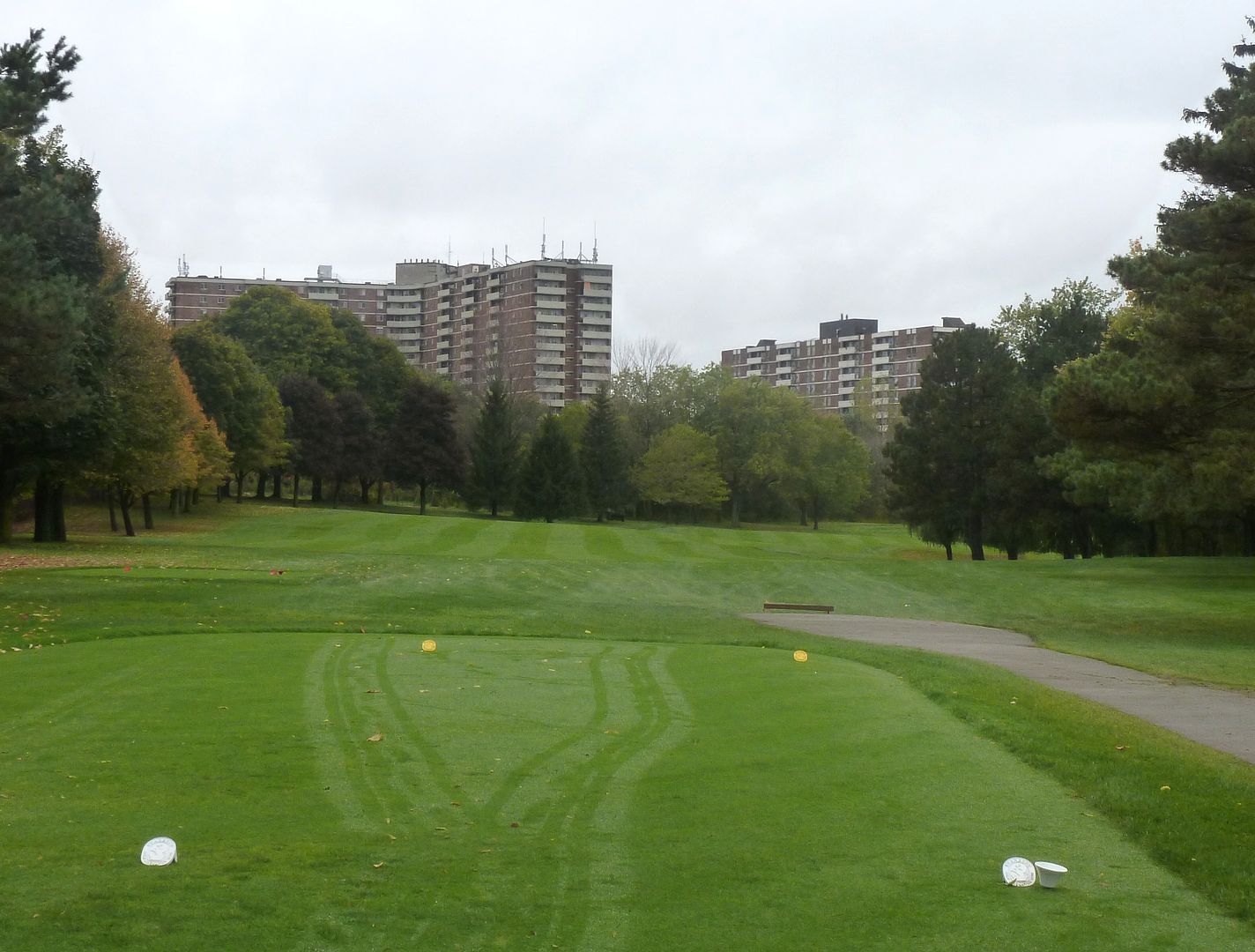 |
| 10 Tee |
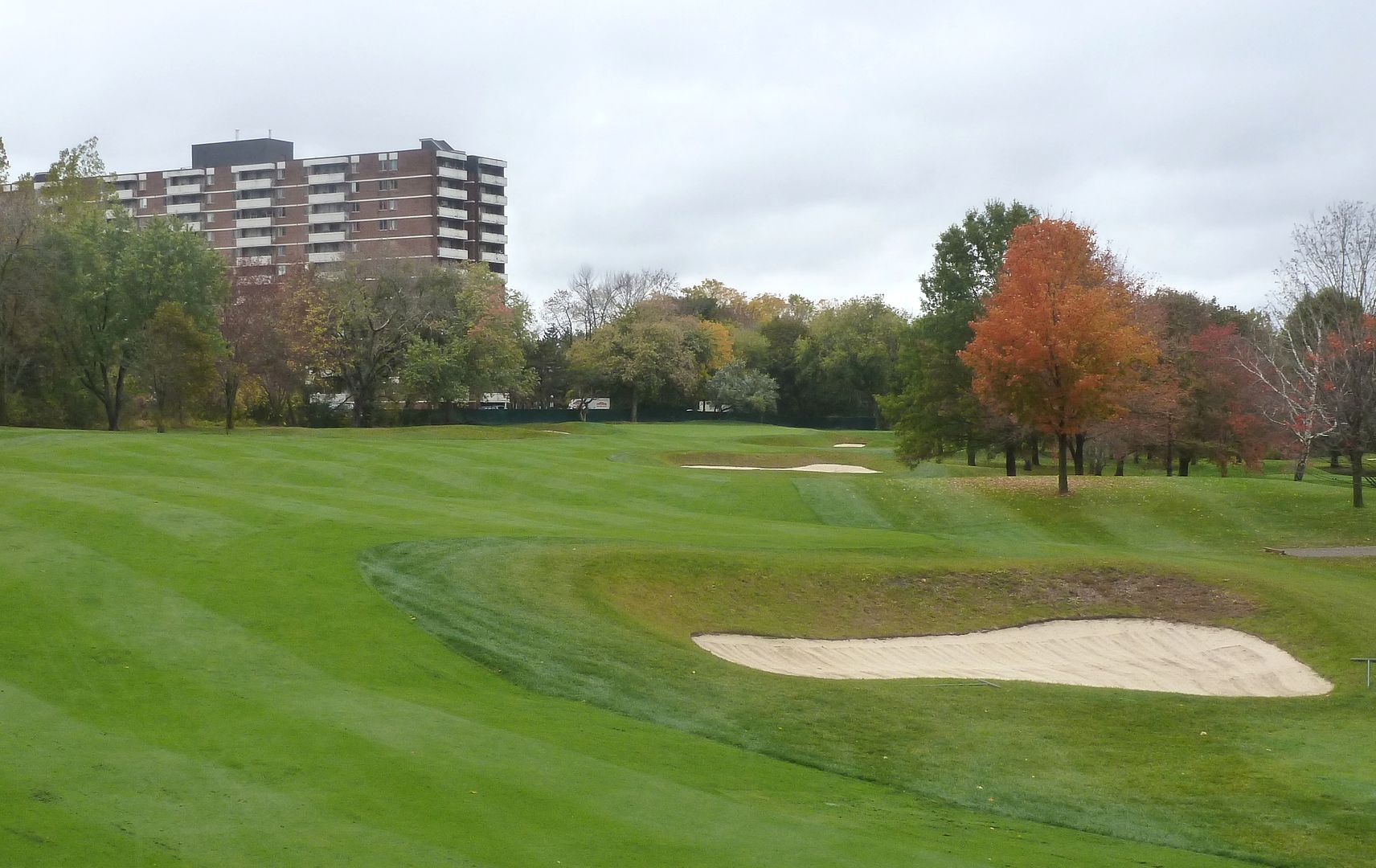 |
| The first bunker lies 245 yards from the tee |
Staggered bunkering protects the second shot landing area as well. Lay-back to 140+ and avoid the bunkers altogether...
 |
| Approach from short of fairway bunkers |
or, you can challenge the bunkers and have an approach from 100 yards out.
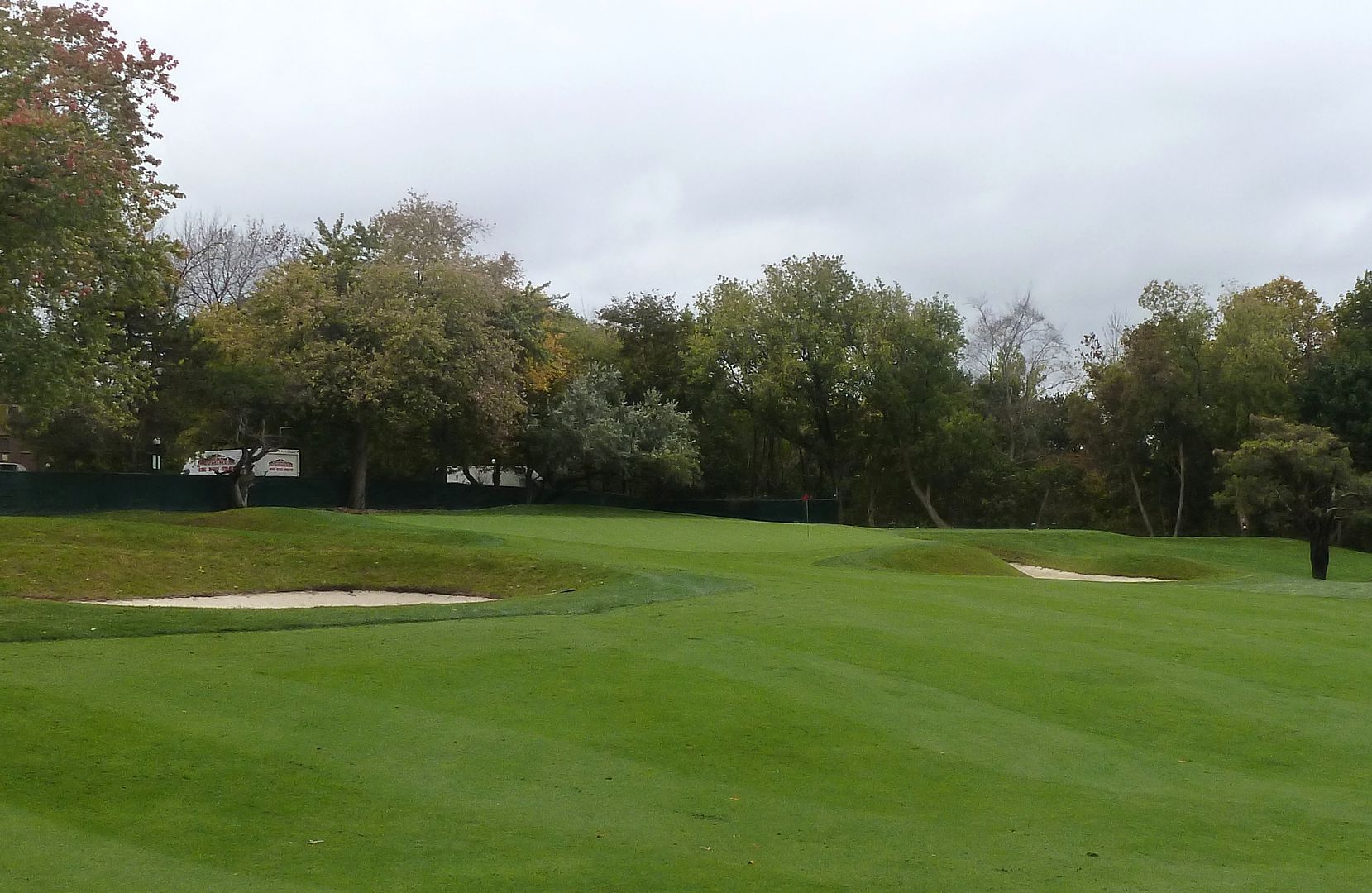 |
| Approach from 100 yards out |
The green slopes with the natural lay of the land from left-to-right. The bunker guarding the right side of the green is the deepest on the course.
 |
| Deep Greenside Bunkering |
Hole 11: Par 3, 110 YardsThough not a great short par-3, it is definitely a good one. The 11th is an opportunity to make birdie, but if you miss the green, you will be lucky to walk away with bogey. The green slopes significantly from back-to-front and is surrounded by deep greenside bunkers set-back slightly from the green to make recovery more difficult.
 |
| 11 Tee |
 |
| Deep Bunkering Short... |
 |
| Right, Long (and left not pictured) |
Hole 15: Par 4, 320 YardsThough short on the scorecard, few players will have the length to challenge this severely uphill par-4. The tee shot is played to a split-level fairway -- it is only 190 yards to the upper-level, but the shot to the upper-level is blind and the fairway is narrowed.
 |
| 15 Tee |
Laying-up to the lower fairway leaves a very difficult and blind approach...
While tee shots into the upper fairway leave a far more appealing look at the green.
 |
| Approach to 15 |
The approach to 15 is played over a scary-deep bunker to the most tilted green on the course and zero room to miss long.
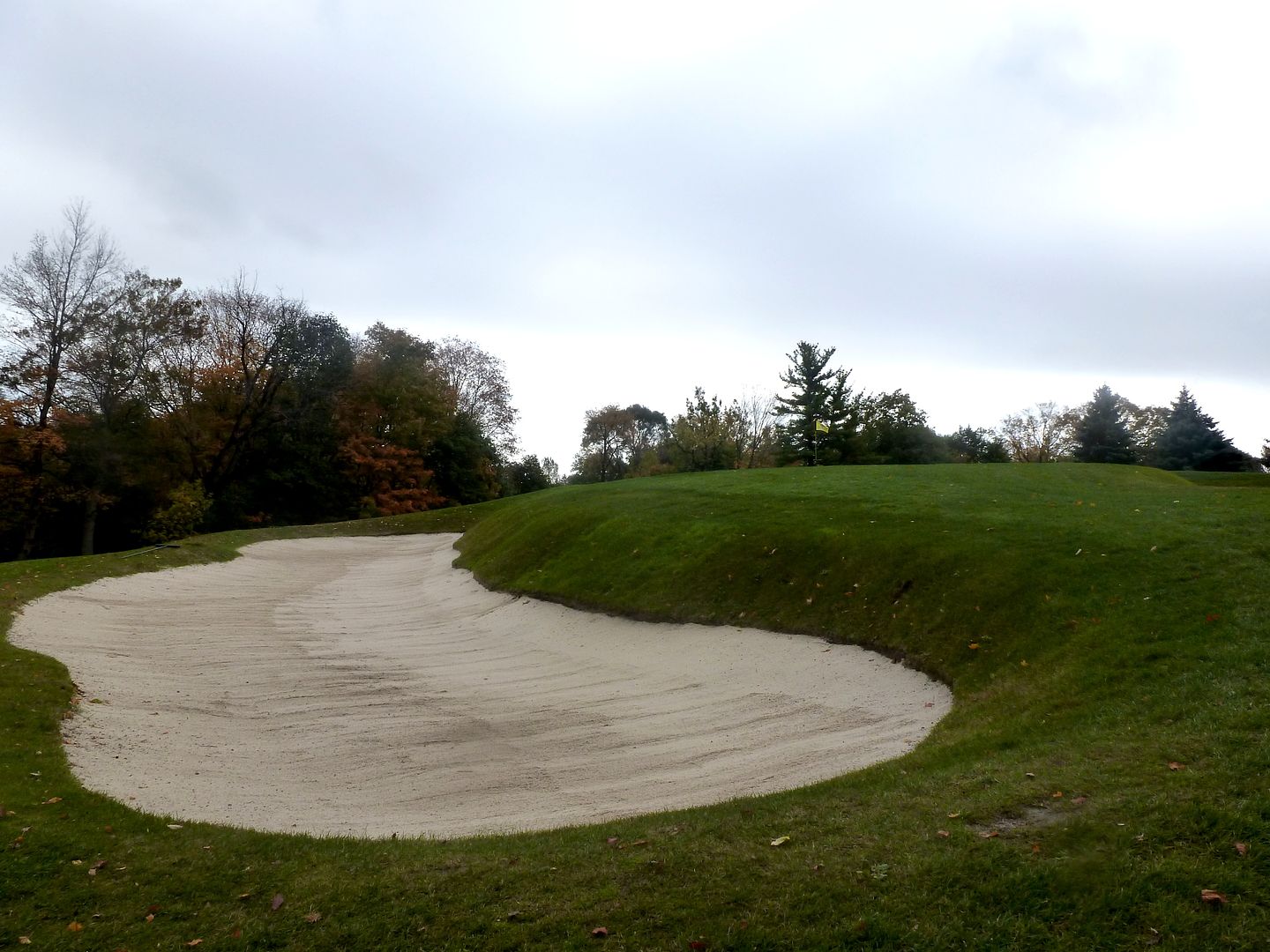 |
| More deep greenside bunkering is found at the 15th |
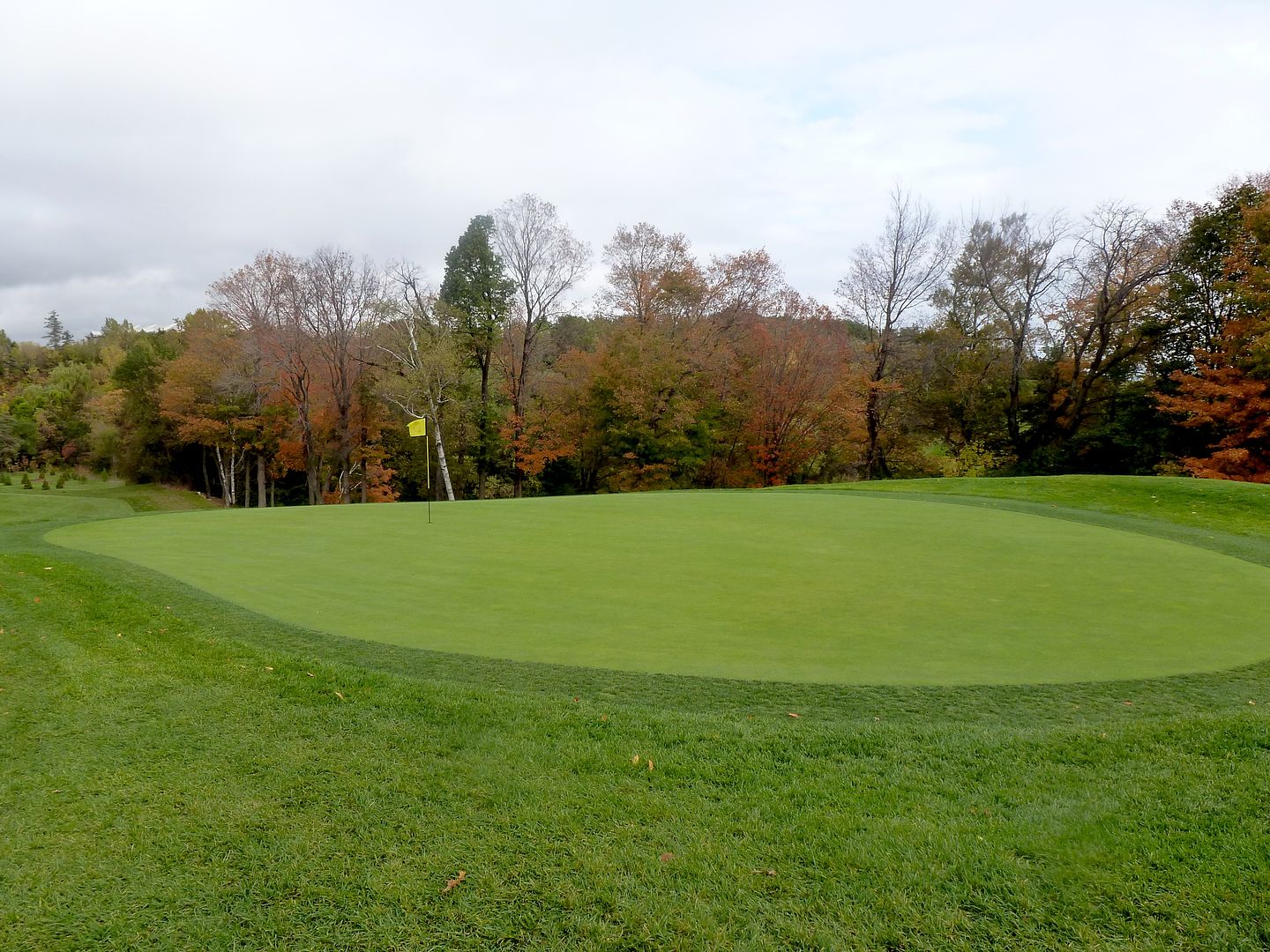 |
| A tiny, sloping green on the 15th |
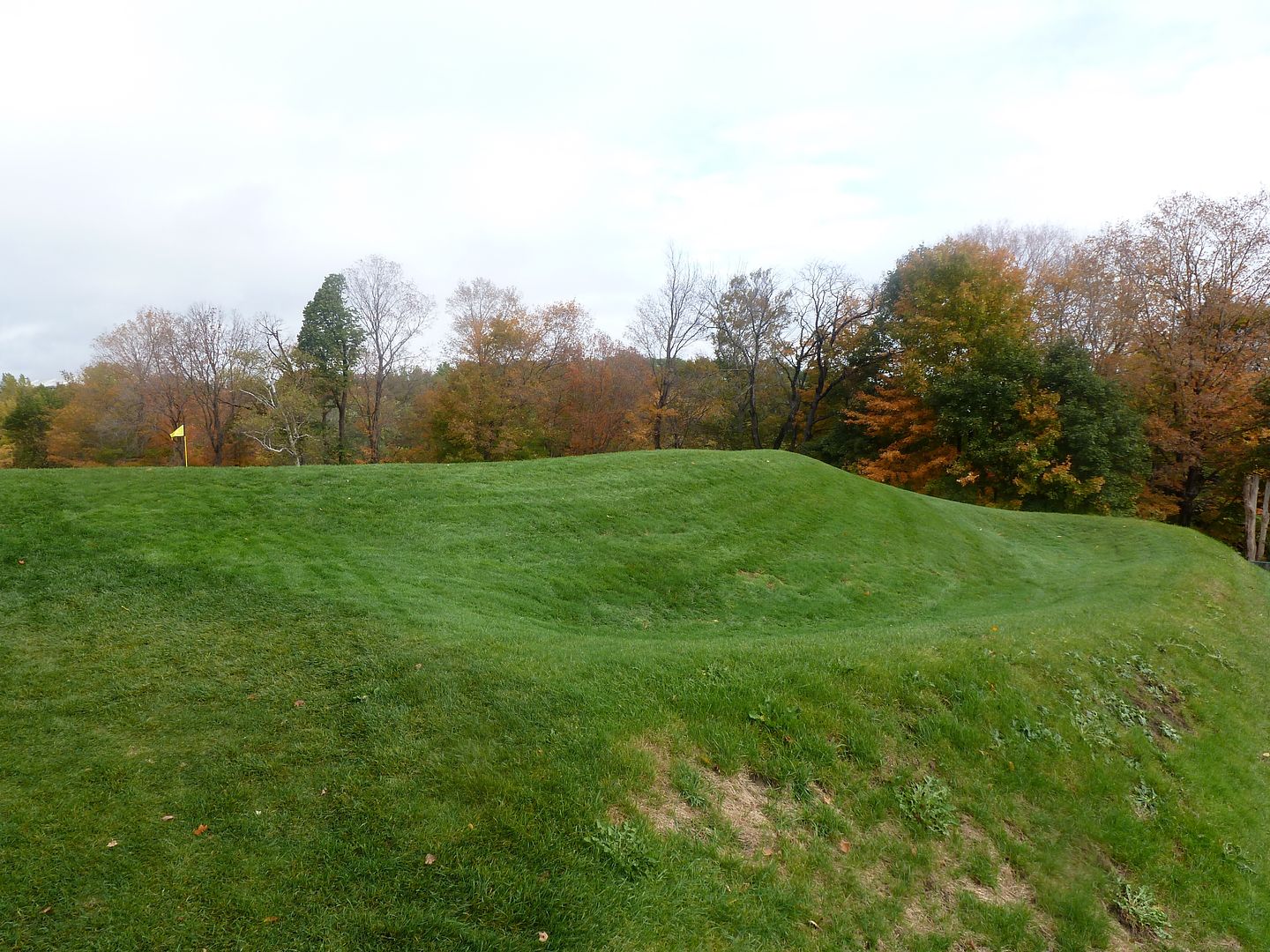 |
| Missing long is not an option |
Hole 16: Par 4, 284 YardsThe sixteenth is deceptively difficult. Though there appears to be lots of width, shots that miss the fairway left will carom down the hill and into a ravine, and shots that miss right will be completely blocked-out by trees. Clever players will hit an iron short of the fairway bunker on the right.
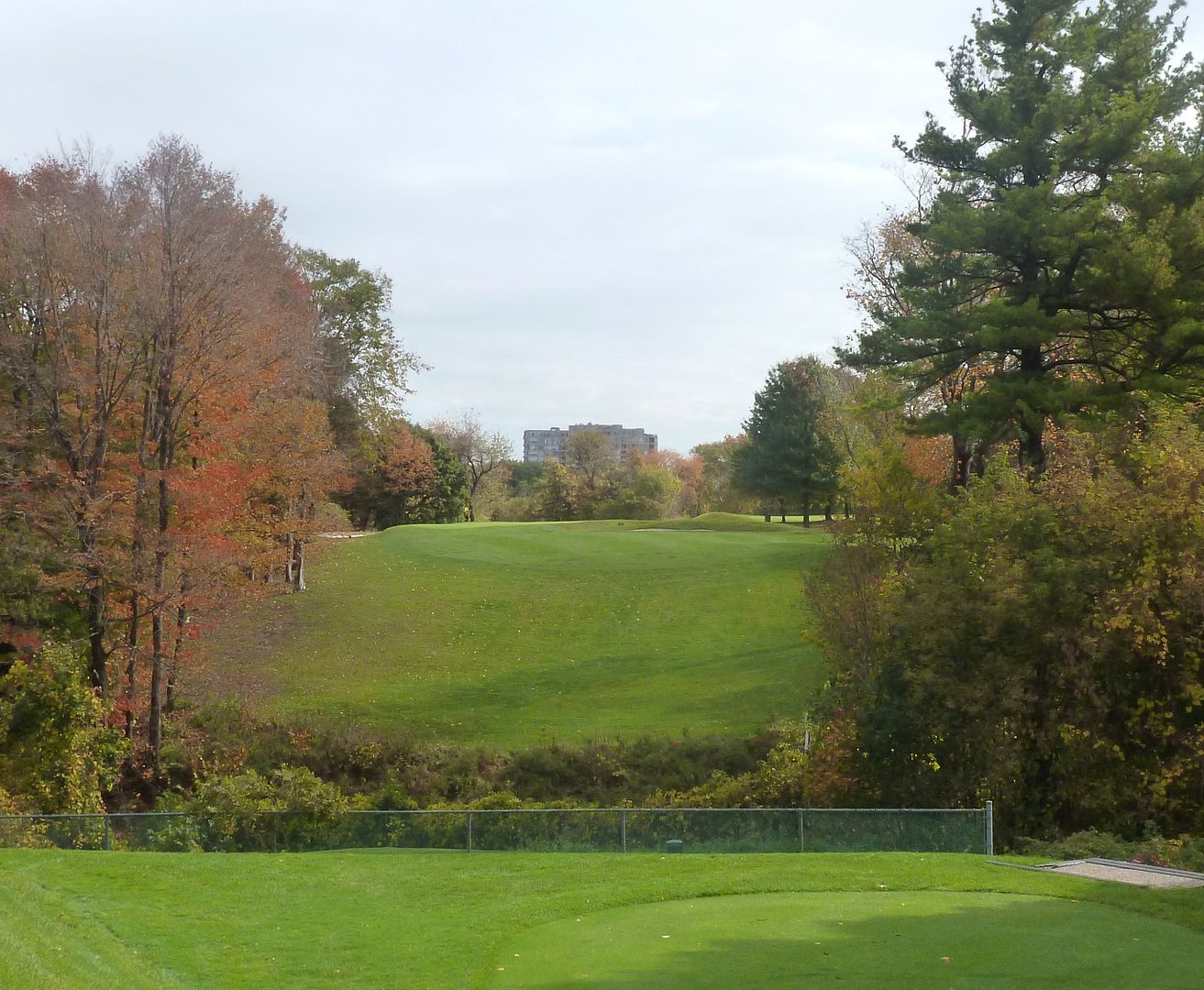 |
| 16 Tee |
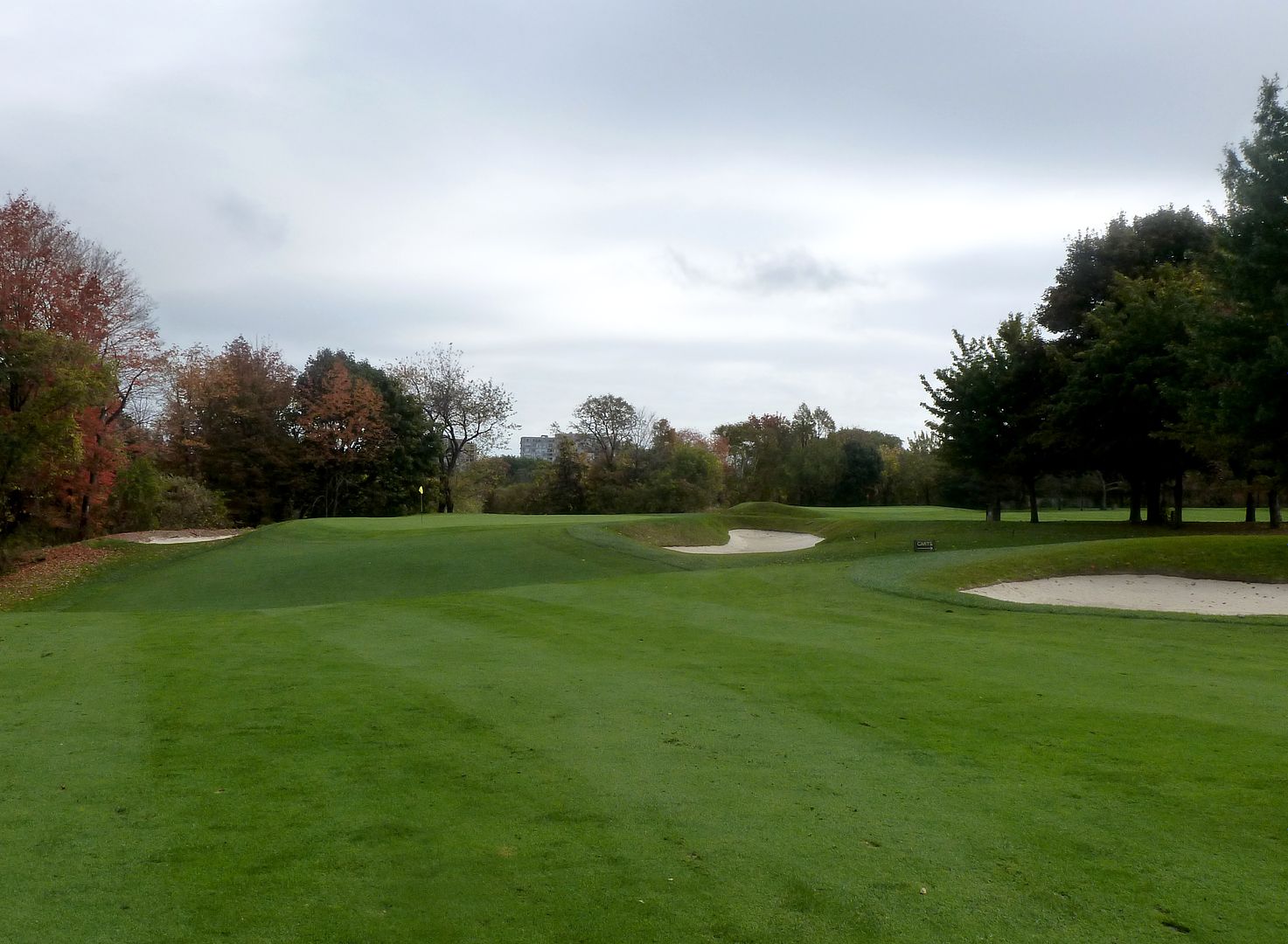 |
| Approach from 100 Yards Out |
Players that try to drive the green will have to deal with a very nasty collection area short of the green. It is difficult to run a shot through this deep swale so players hoping to drive the green will probably have to carry it. The swale also serves as a false-front, catching shots that land on the first few feet of the green.
 |
| A Deep Swale Protects the 16th Green |
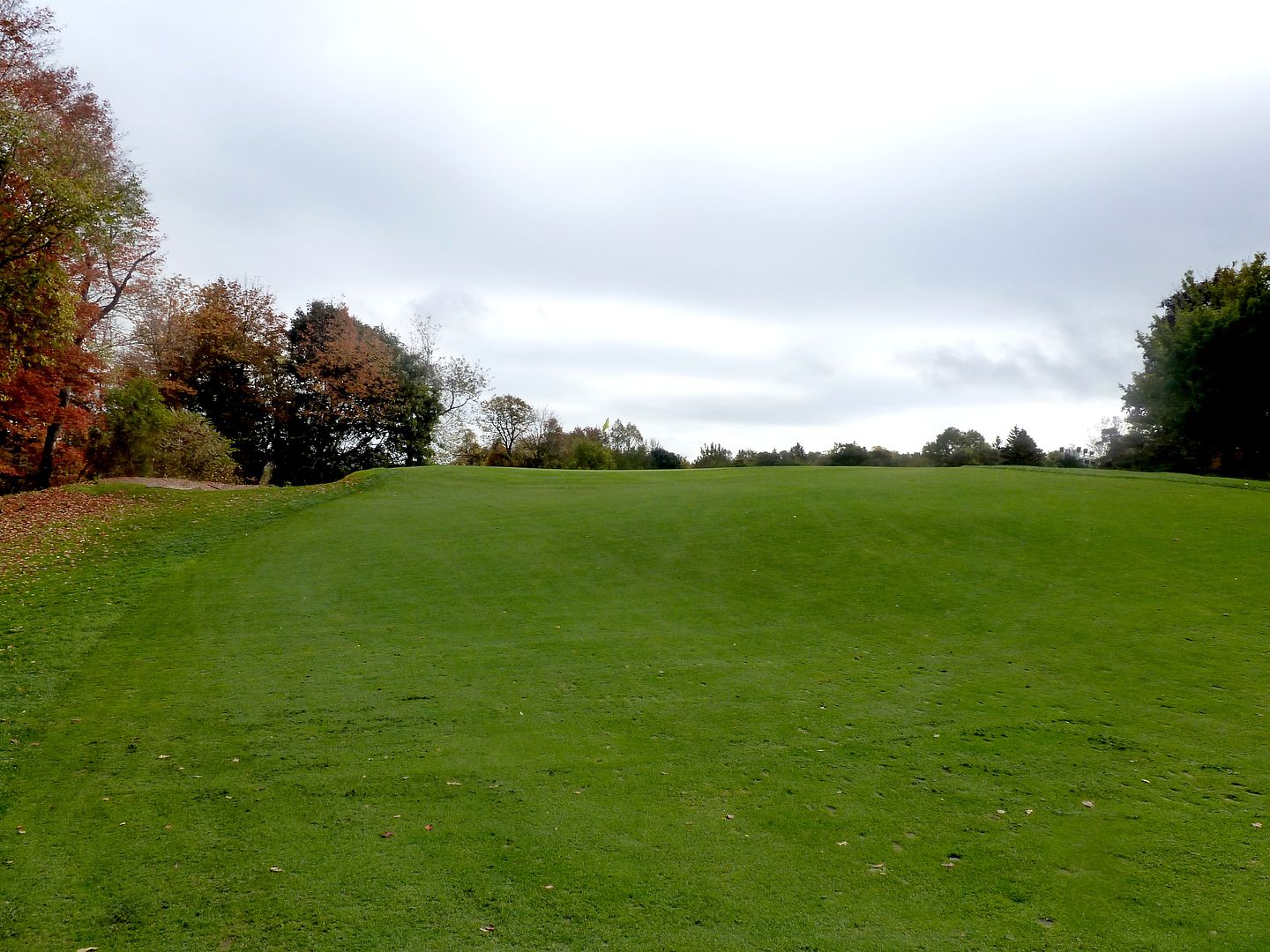 |
| The View from in the Swale is Not Appealing! |
Interestingly, even though this is a very short hole, the green is rather large and flat. Thanks for the break, Tillie!
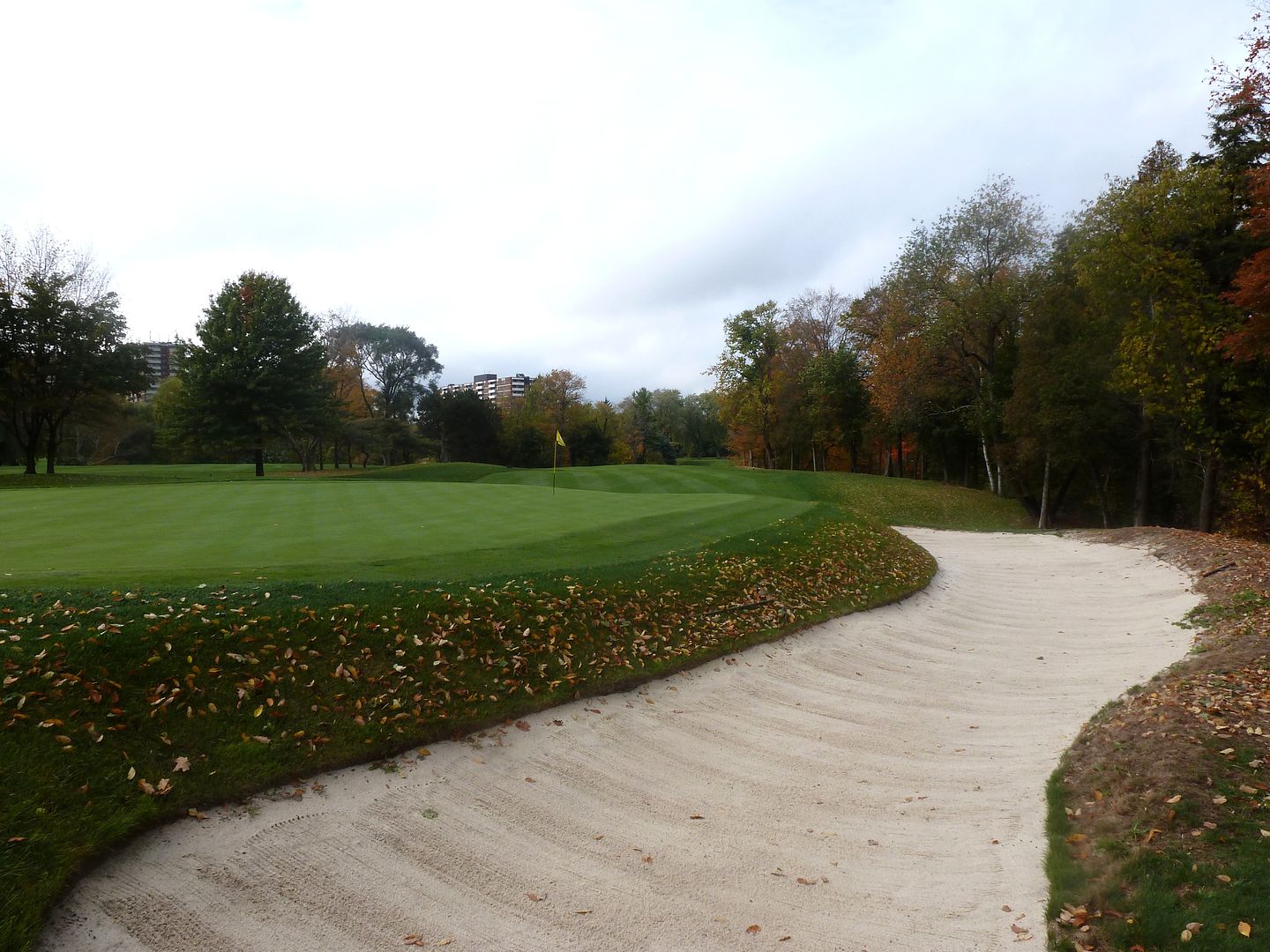 |
| 16 Green |
Hole 18: Par 4, 435 YardsProbably the most-well known thing about Scarboro is the uber-quirky drive on the 18th hole, which is played over the heavily-trafficked Scarborough Golf Club Road. In truth, the tee shot on the 18th is not visually appealing, though this will be rectified when the club completes the planned raising of the 18th tees. Even though it is near-impossible to hit a car, it is still difficult to not be a little nervous hitting over the road.
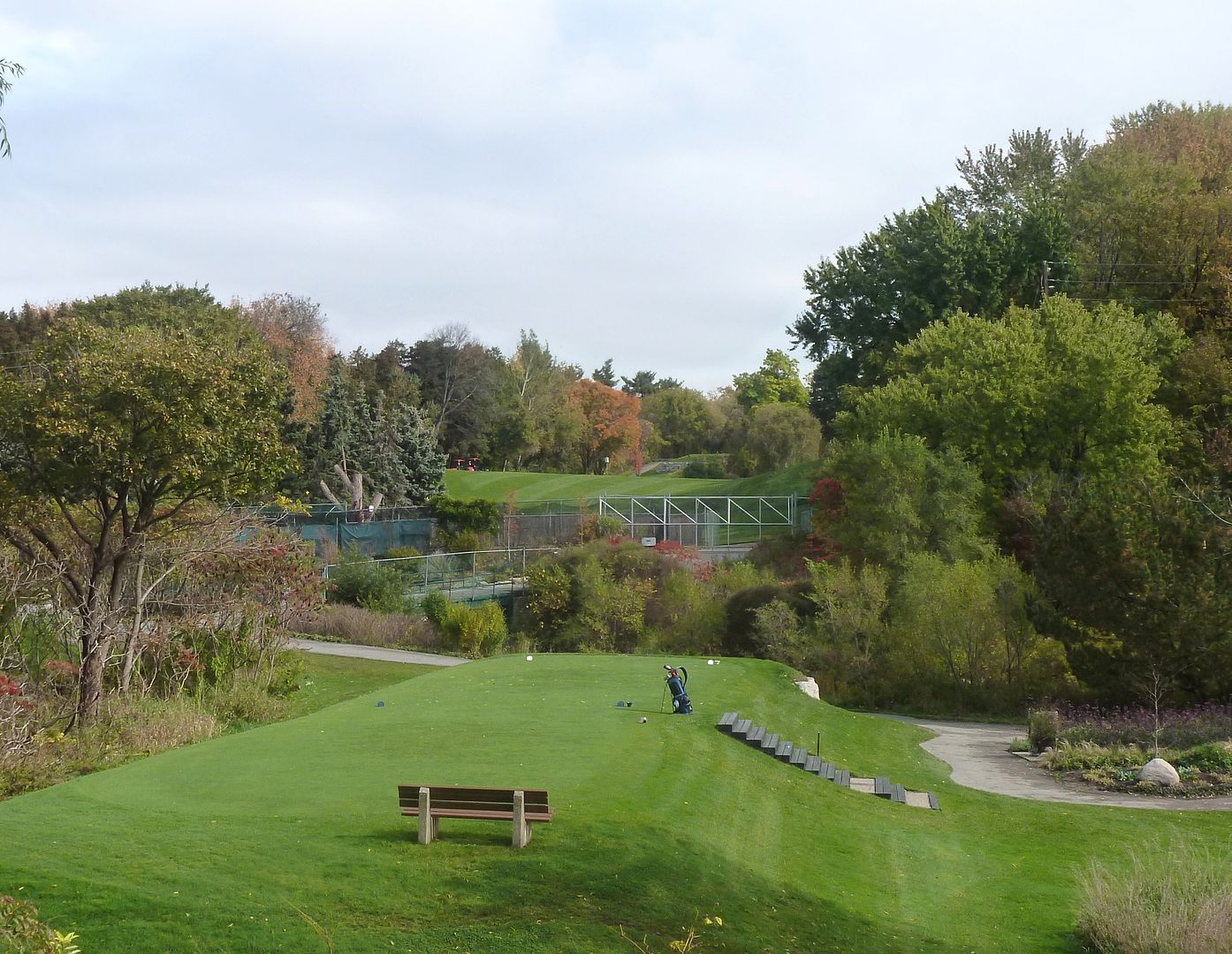 |
| 18 Back Tee |
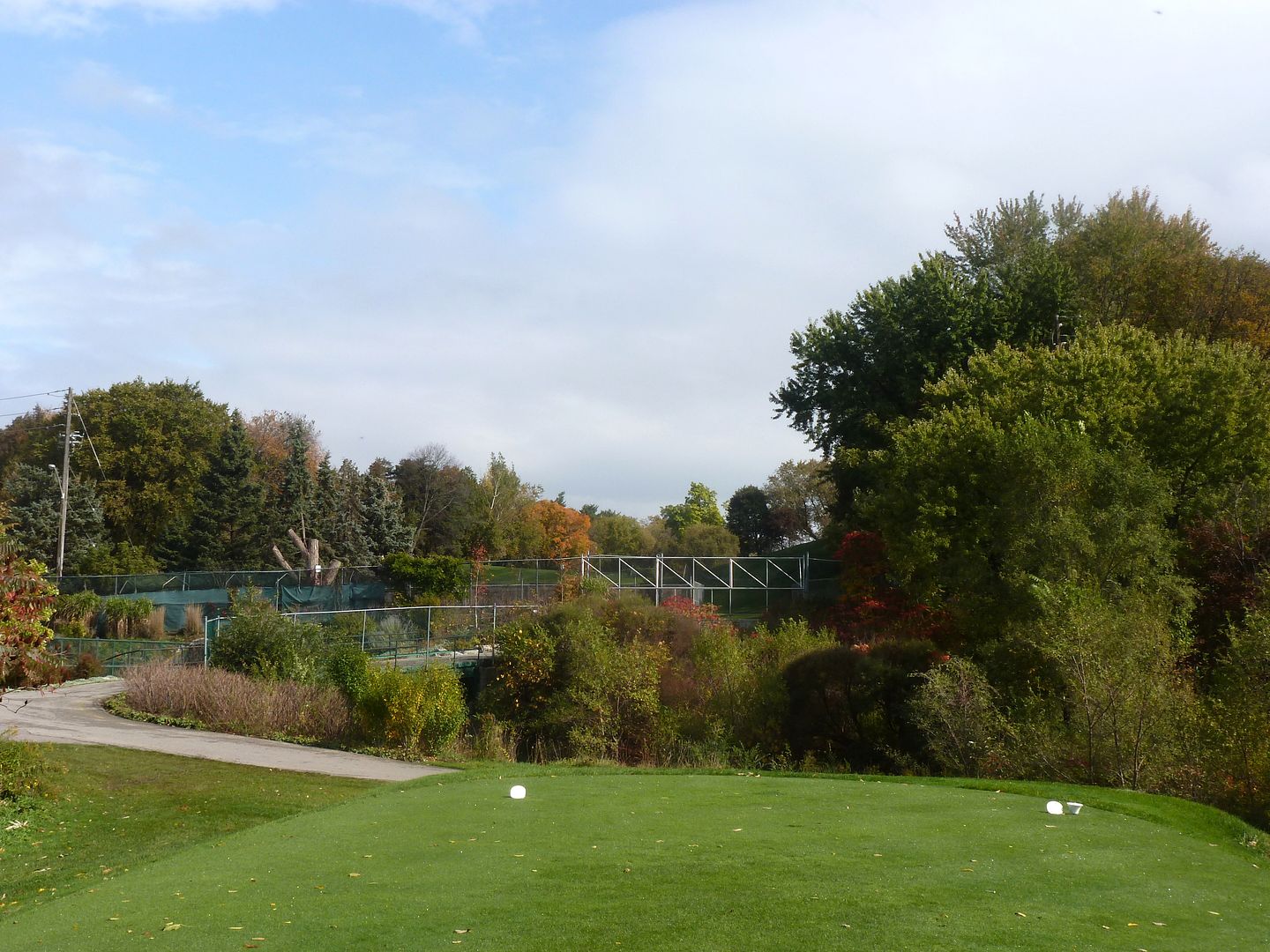 |
| 18 Member Tee |
It's a shame that the focus of the 18th is the quirky tee shot, as the remainder of the hole is actually very good. The fairway is rolling, but on a grander scale than the rest of the golf course. The approach is very difficult, likely played with a long-iron or hybrid to a plateau green protected again by deep bunkering. The only negative is the unusual shape of the bunker short-right of the 18th green. The use of a pot bunker is wholly inconsistent with the bunkering on the rest of the golf course. Still, a strong finisher.
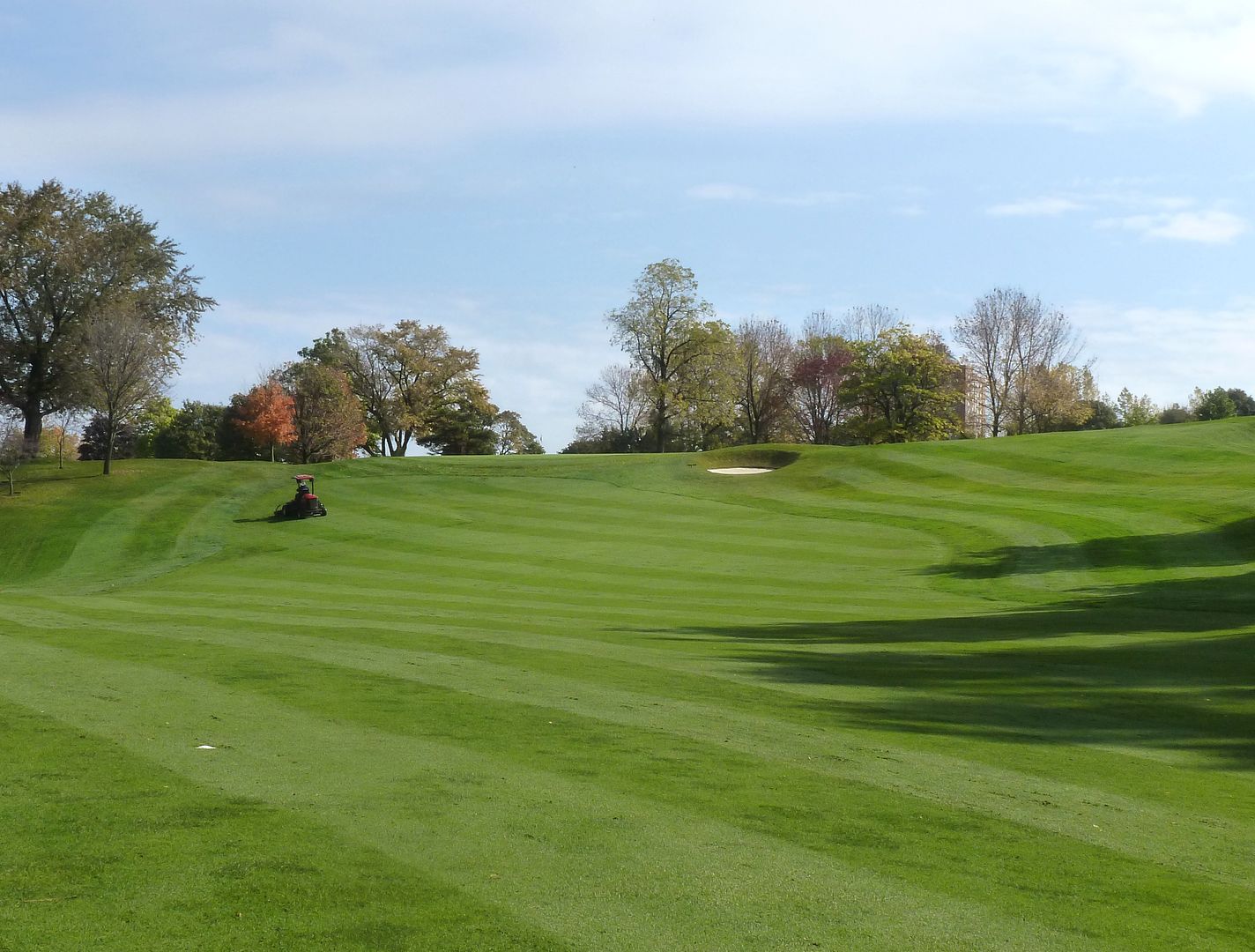 |
| 18 Approach |














































No comments:
Post a Comment